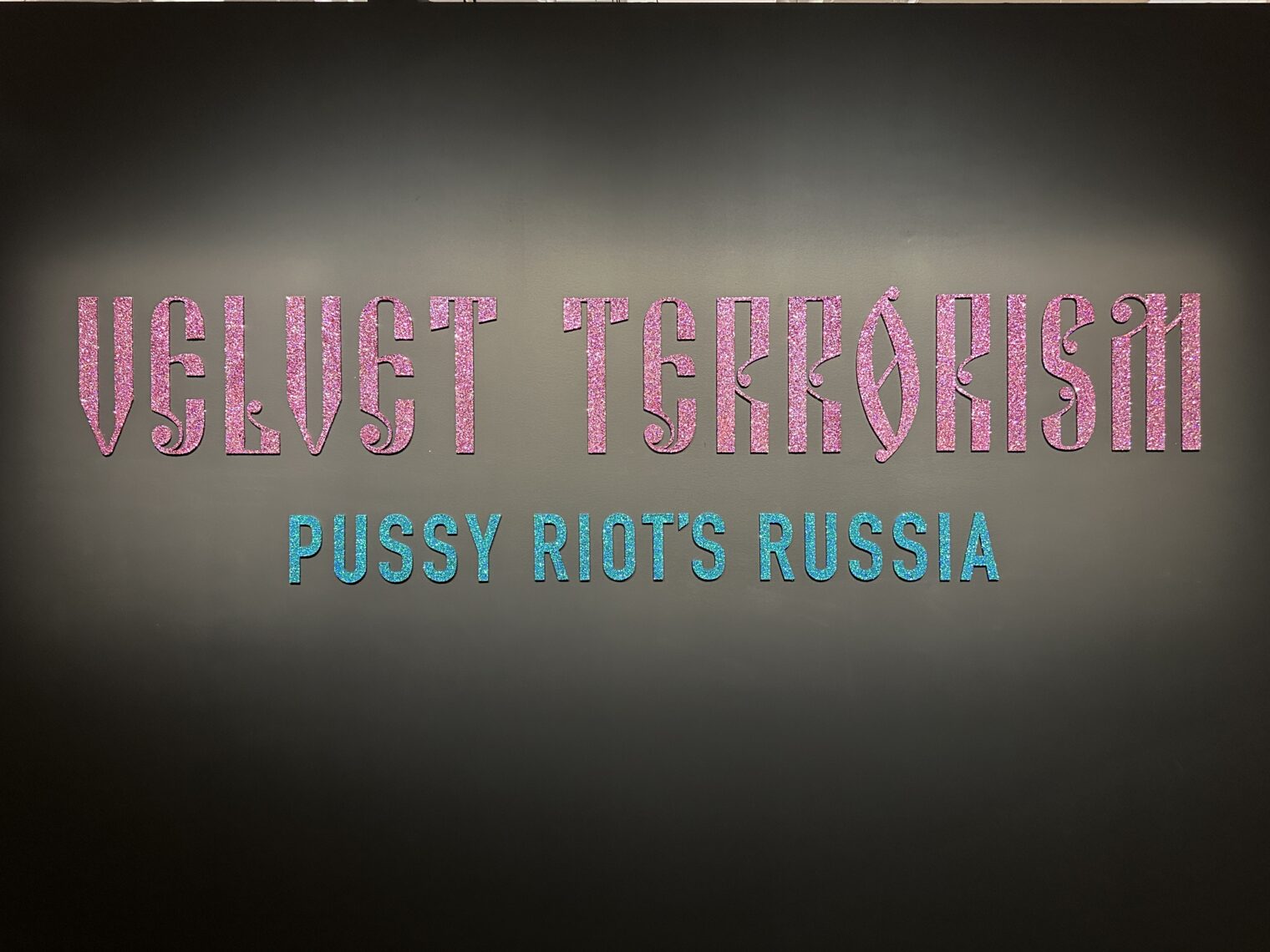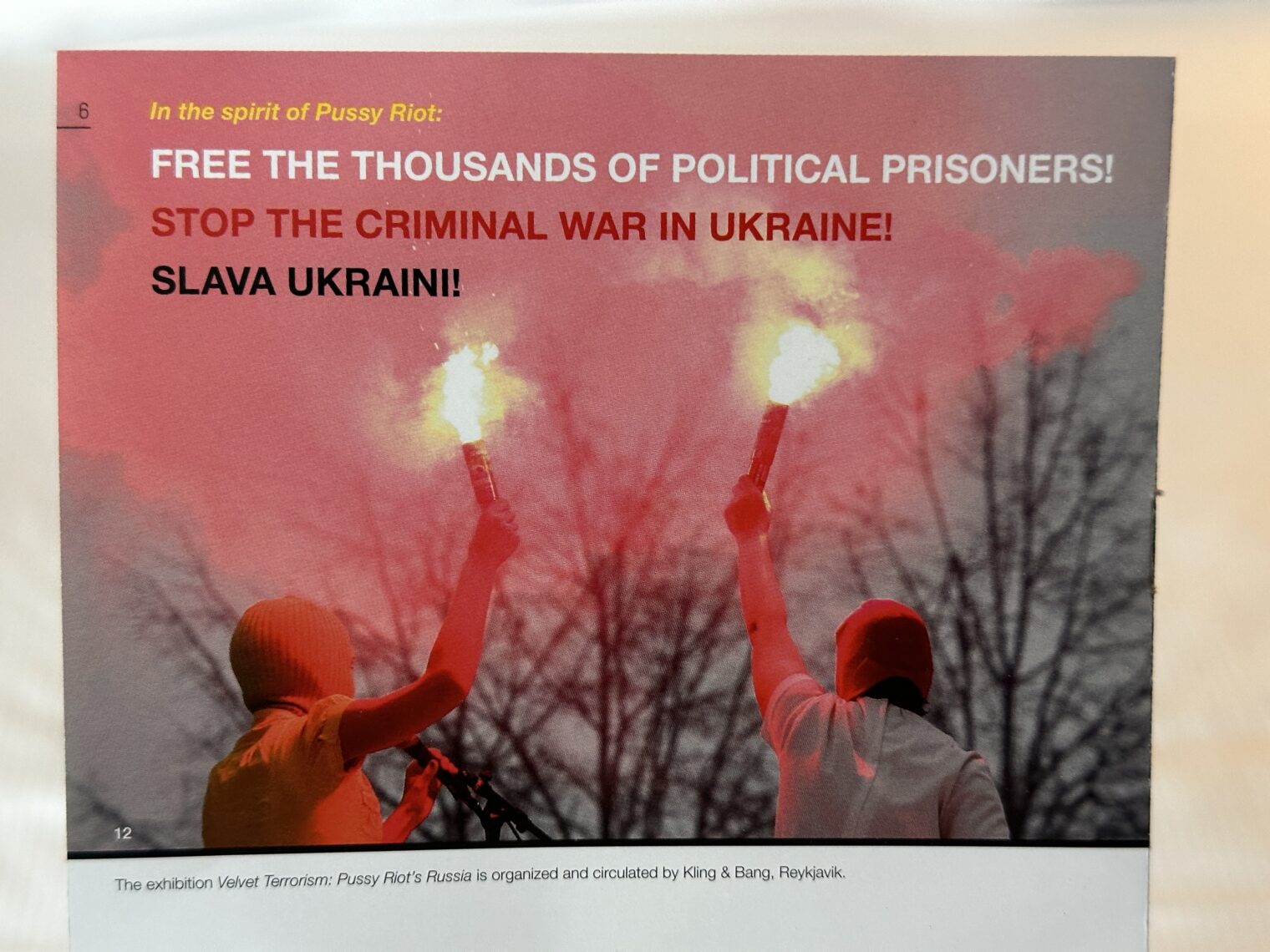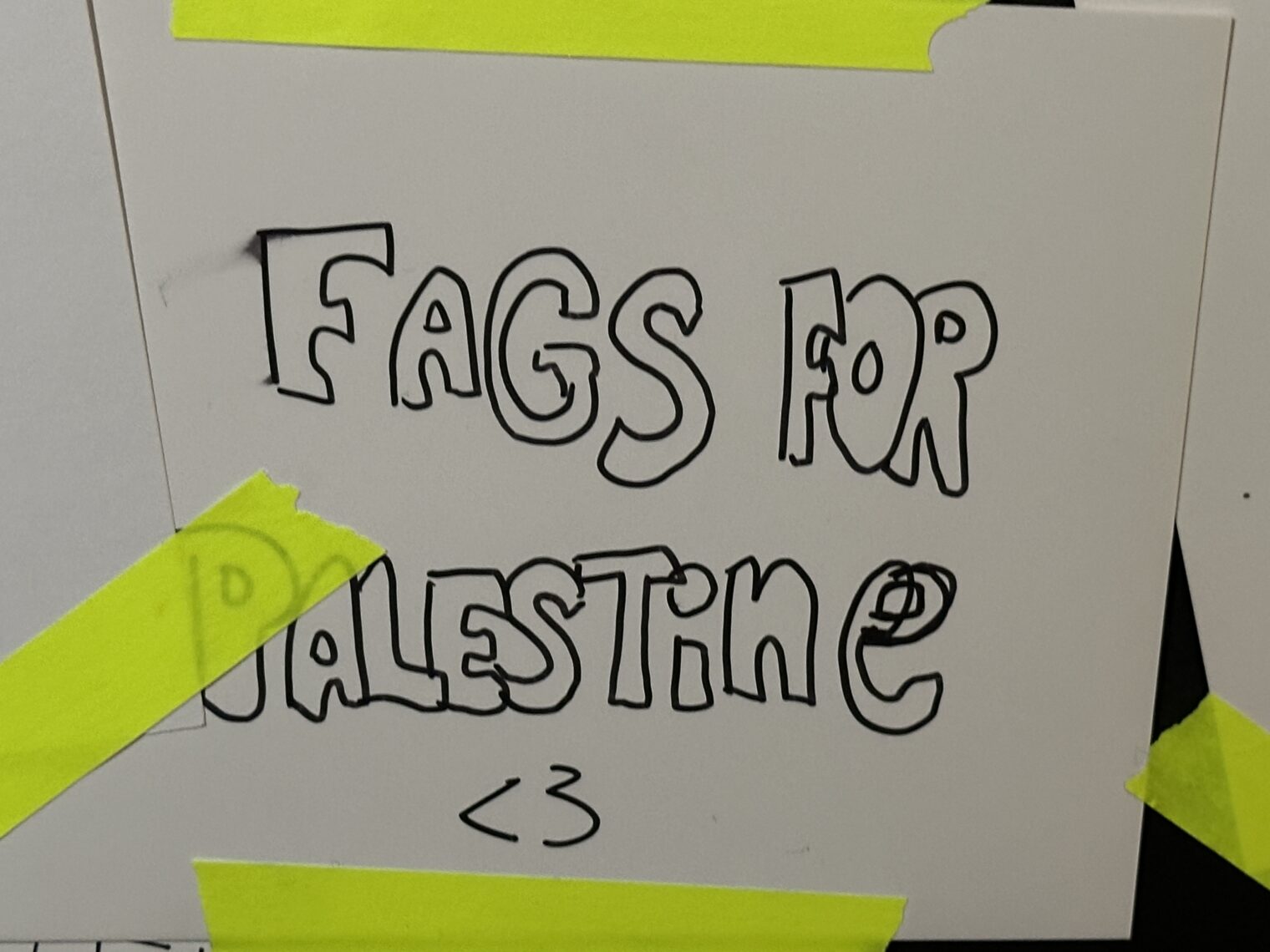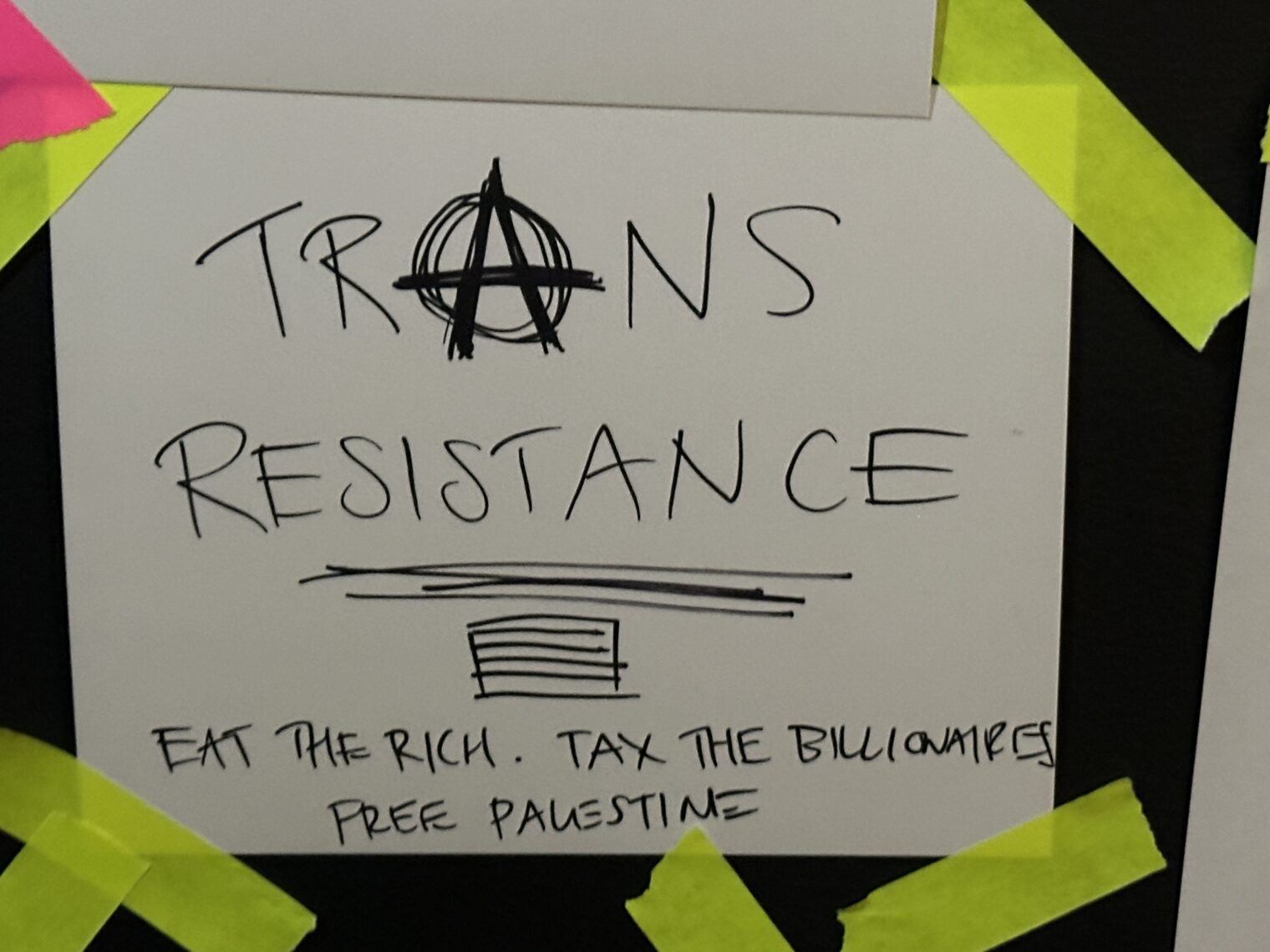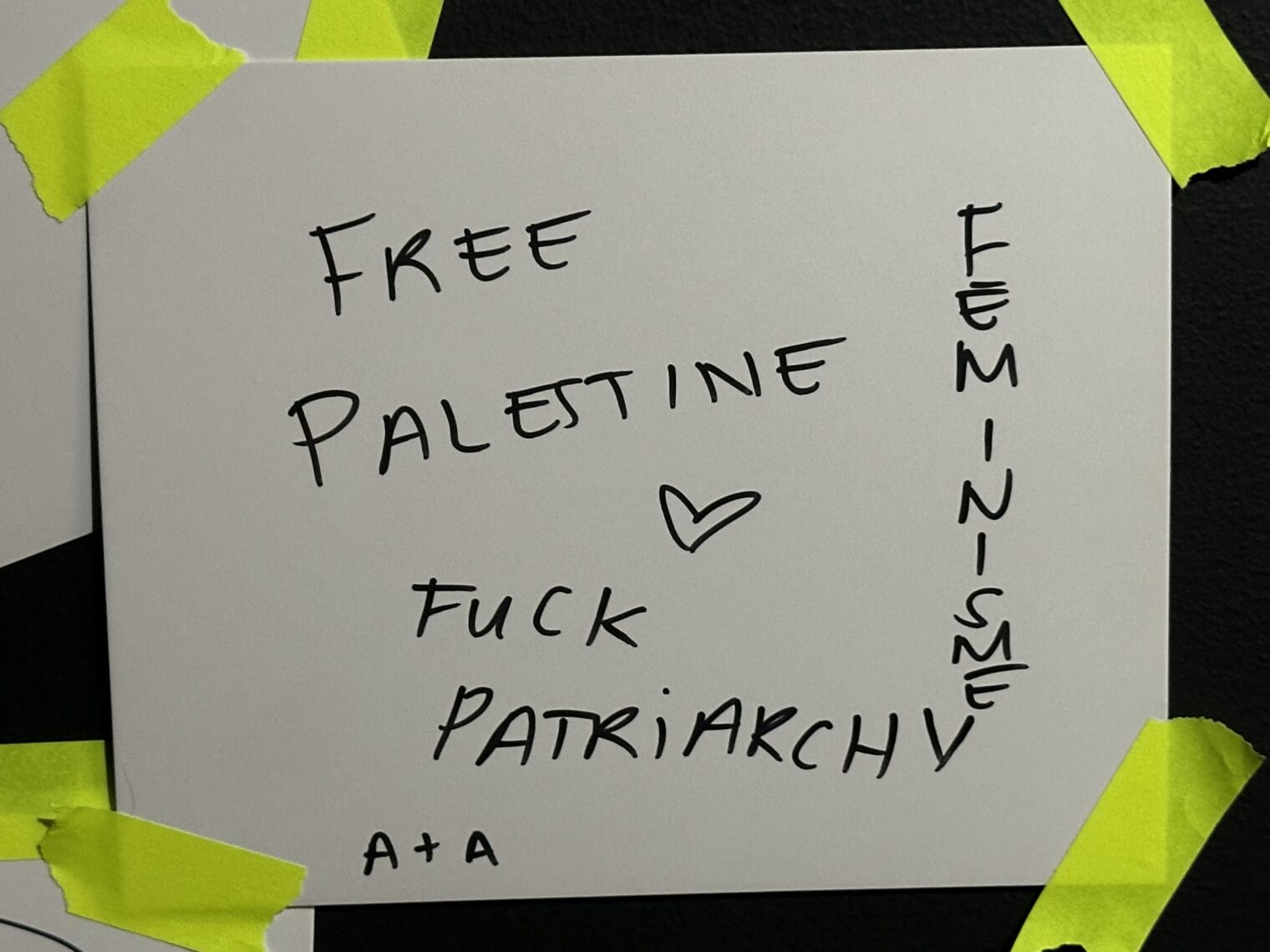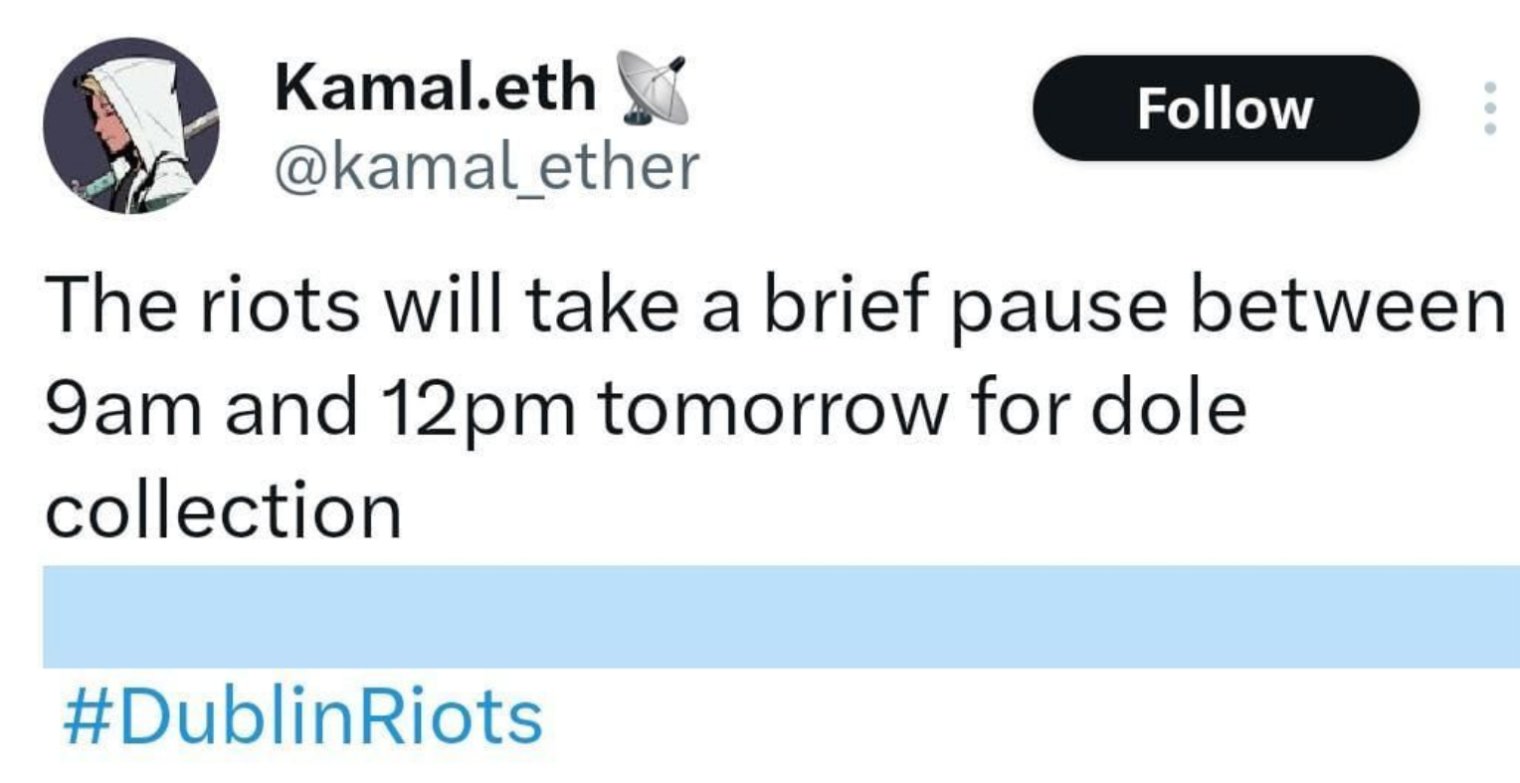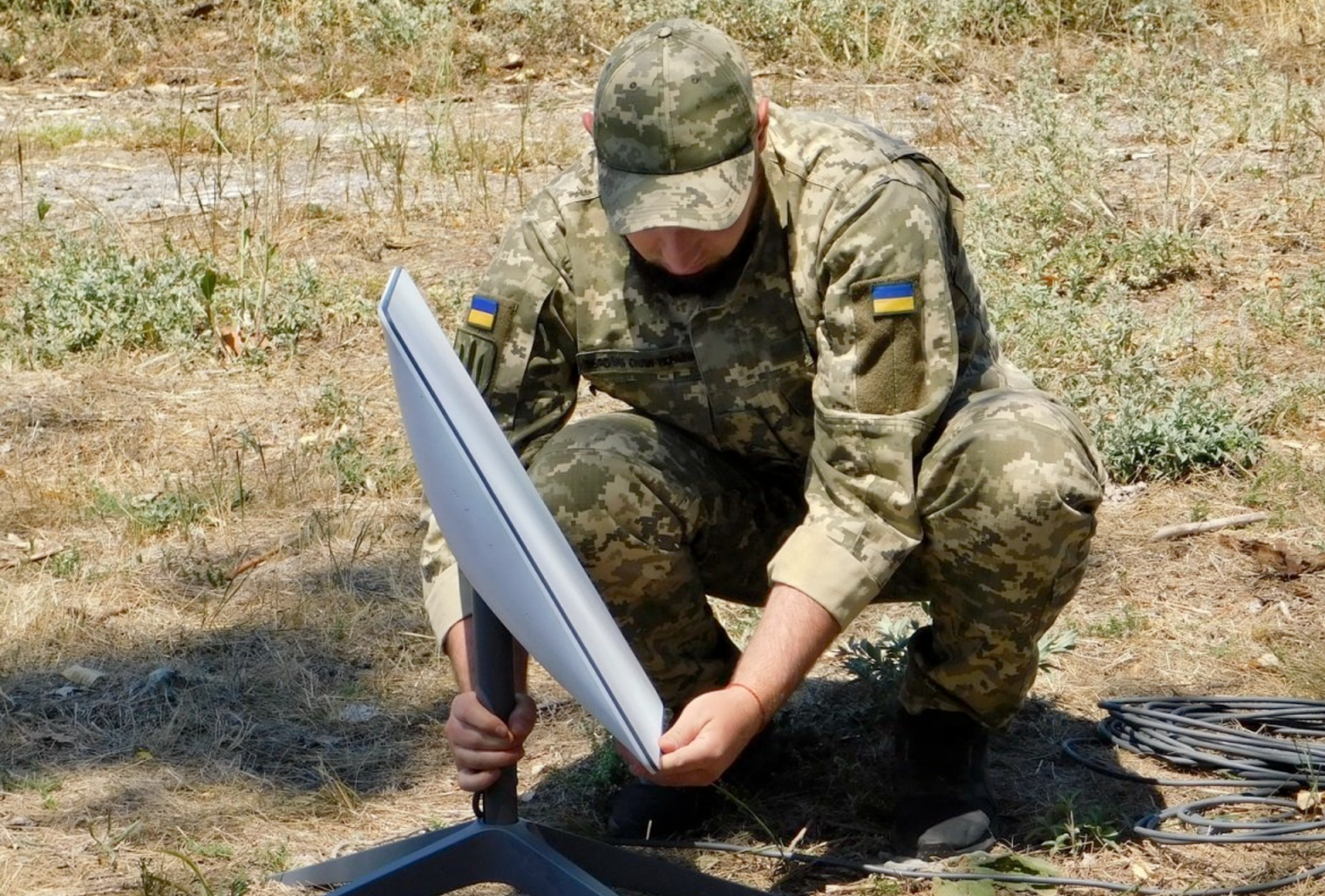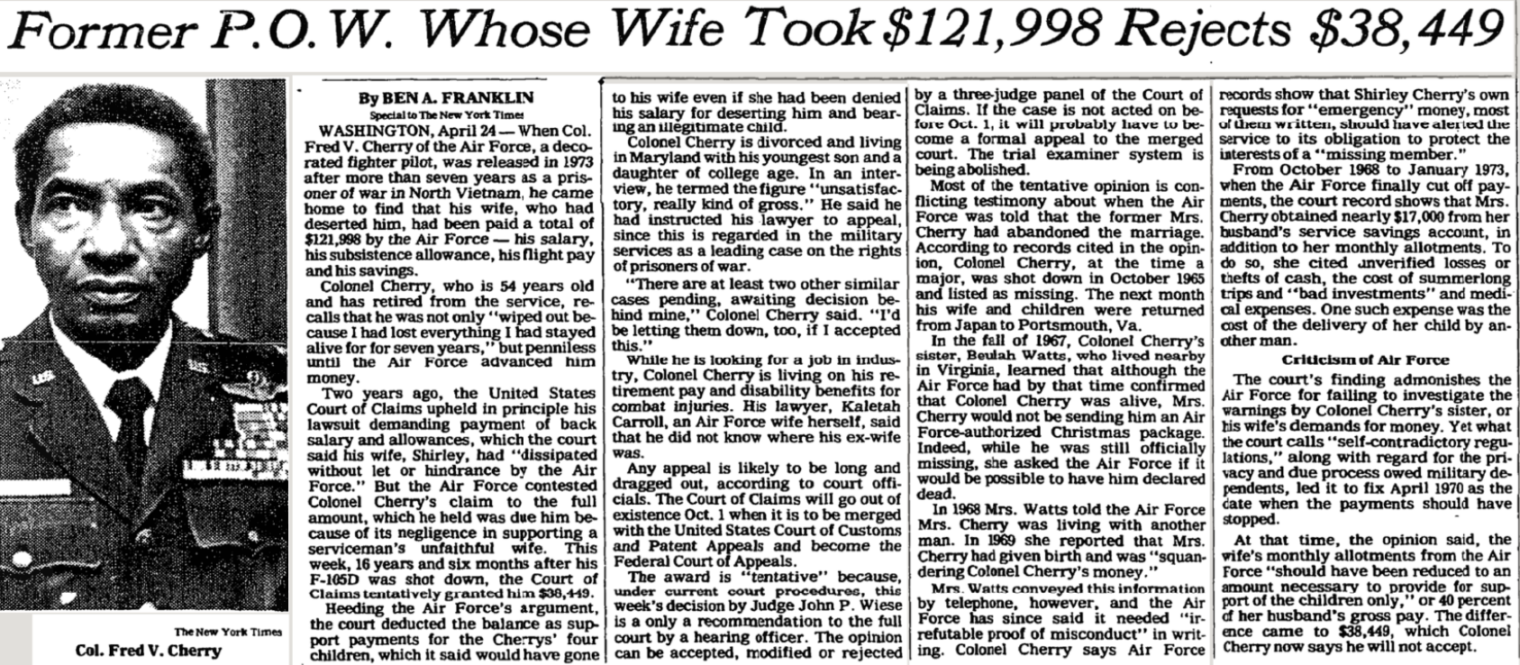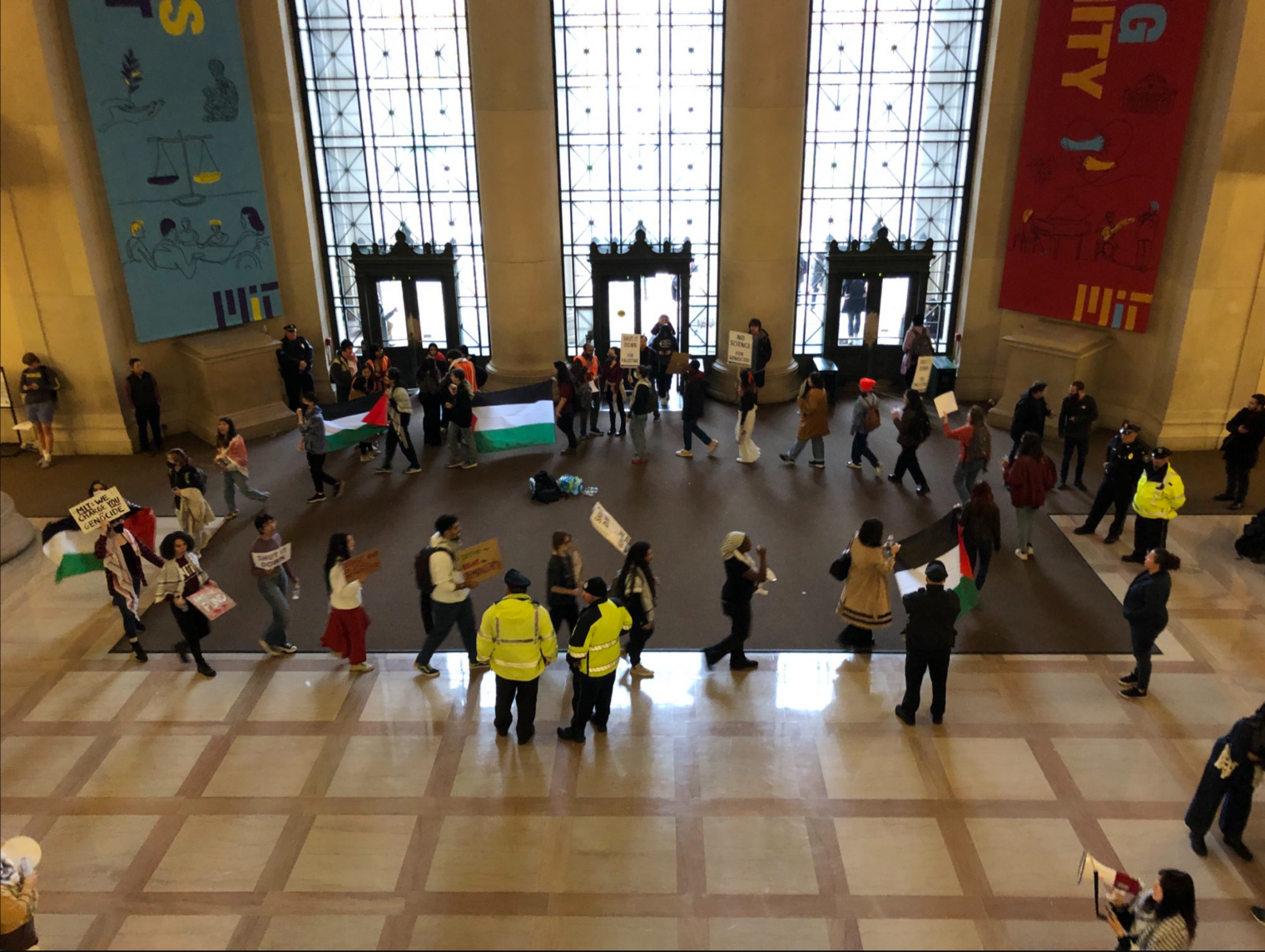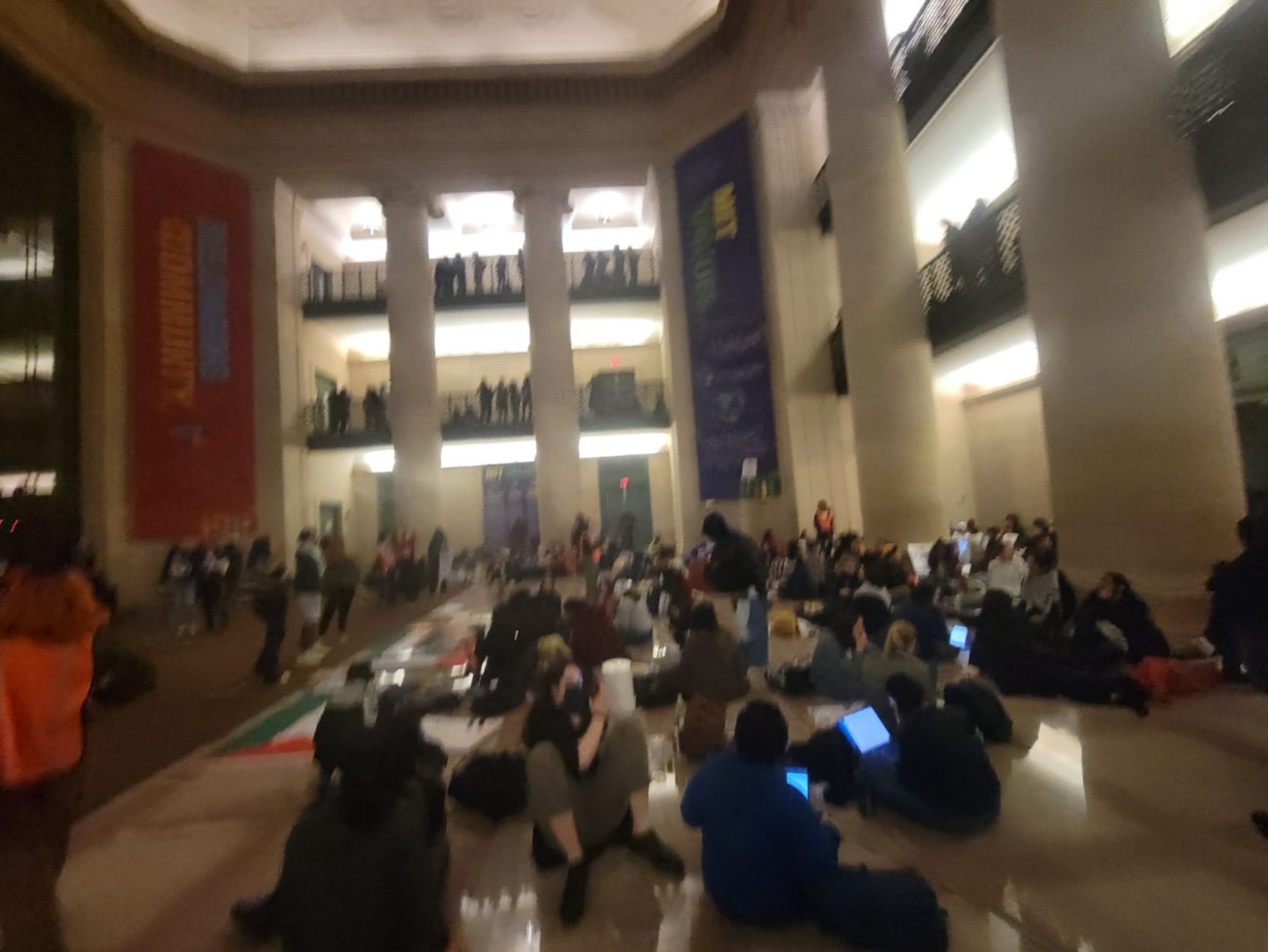Pussy Riot in Montreal
The Montreal Museum of Contemporary Art was ordered shut by Covidcrats in 2020 and allowed to reopen in February 2021. Just a couple of months later, the museum closed for a renovation that was supposed to be complete in 2024 but, according to the lady who sold me a ticket to the temporary exhibit space in a nearby underground mall, is now on track to be finished in 2028.
What’s in the temporary space? “Velvet Terrorism,” an exhibit on the decade-long protest by Pussy Riot against Vladimir Putin and Russia’s military operations in Ukraine.
From the brochure:
The first couple of rooms:
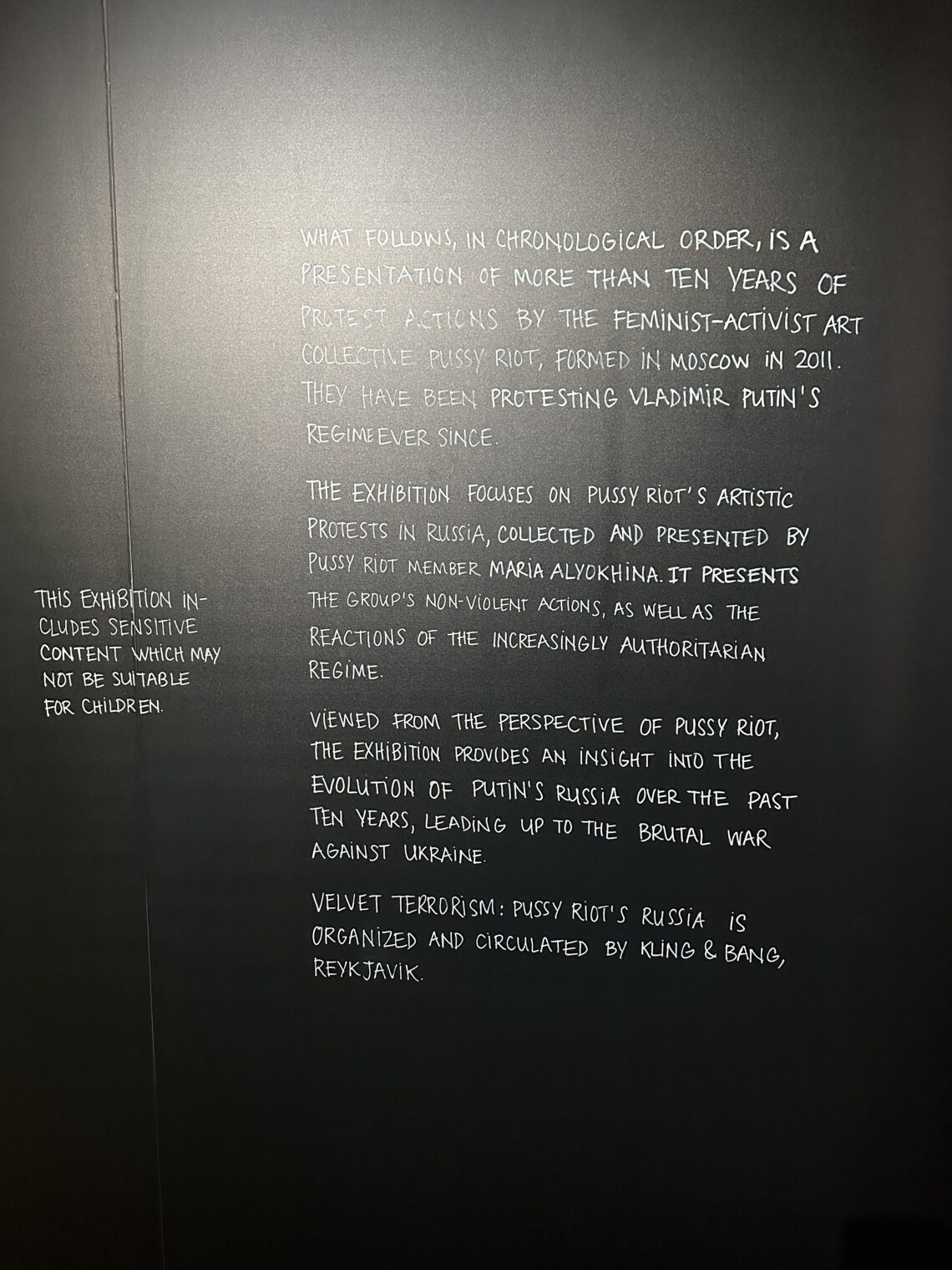
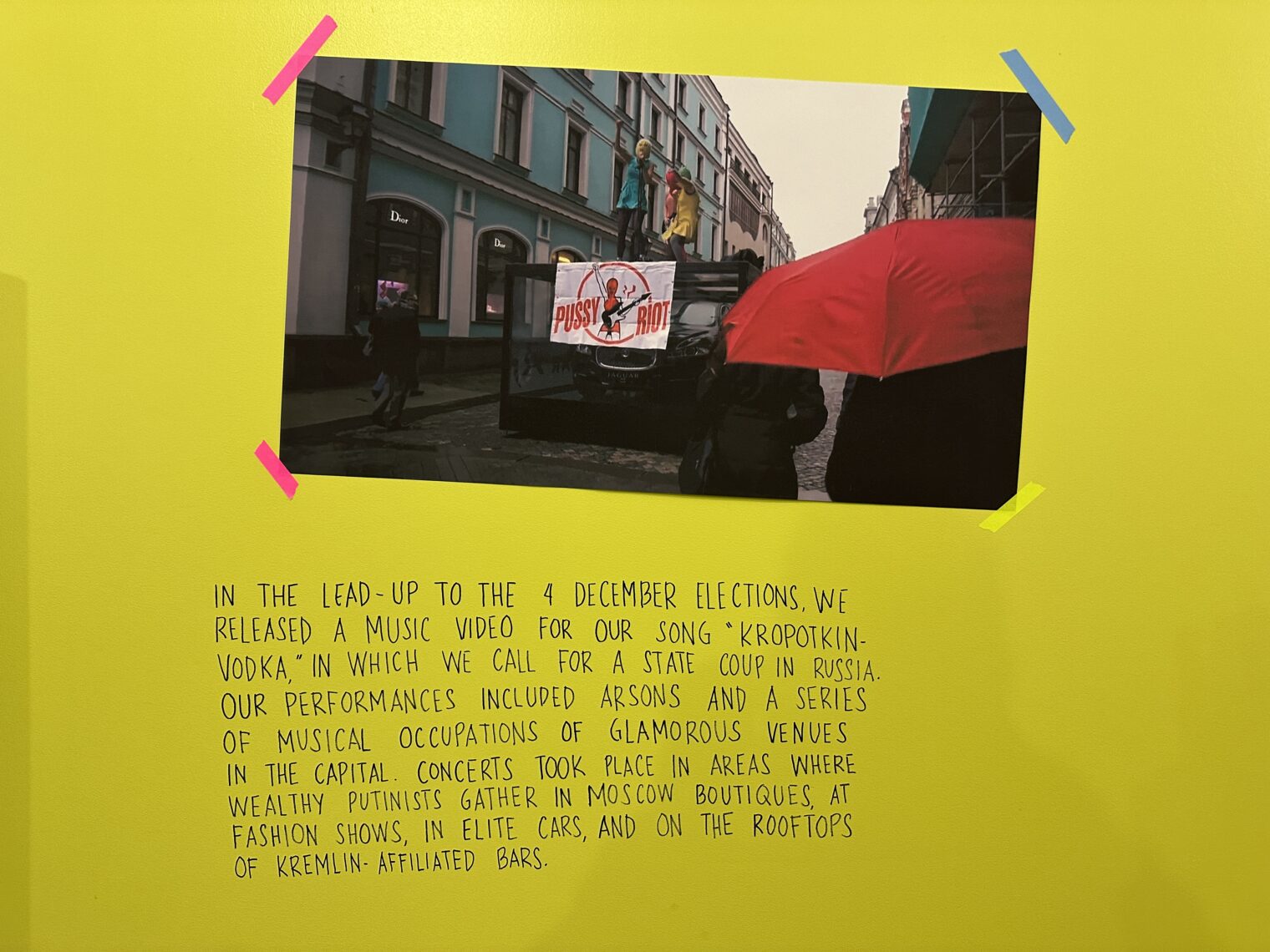
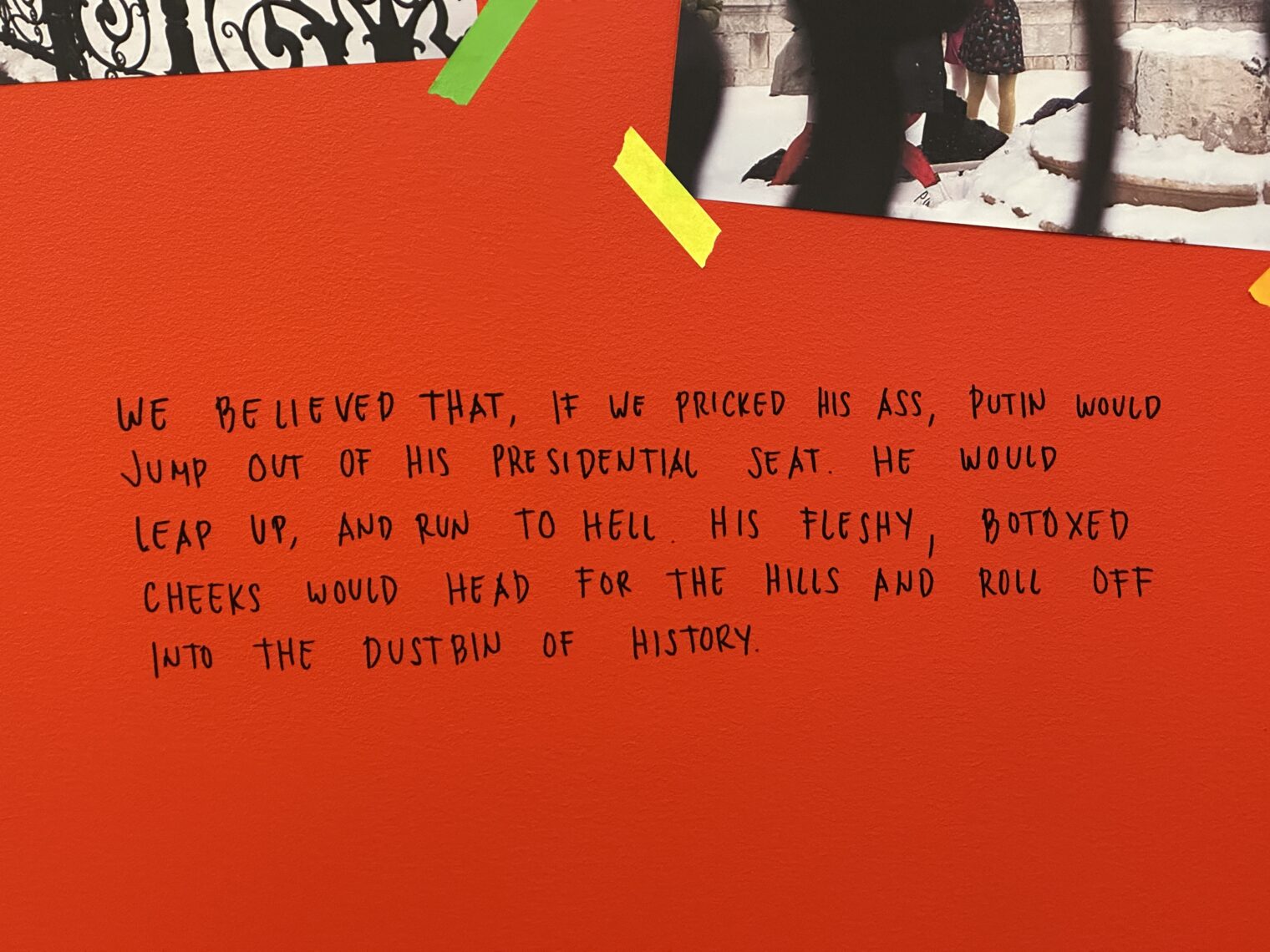
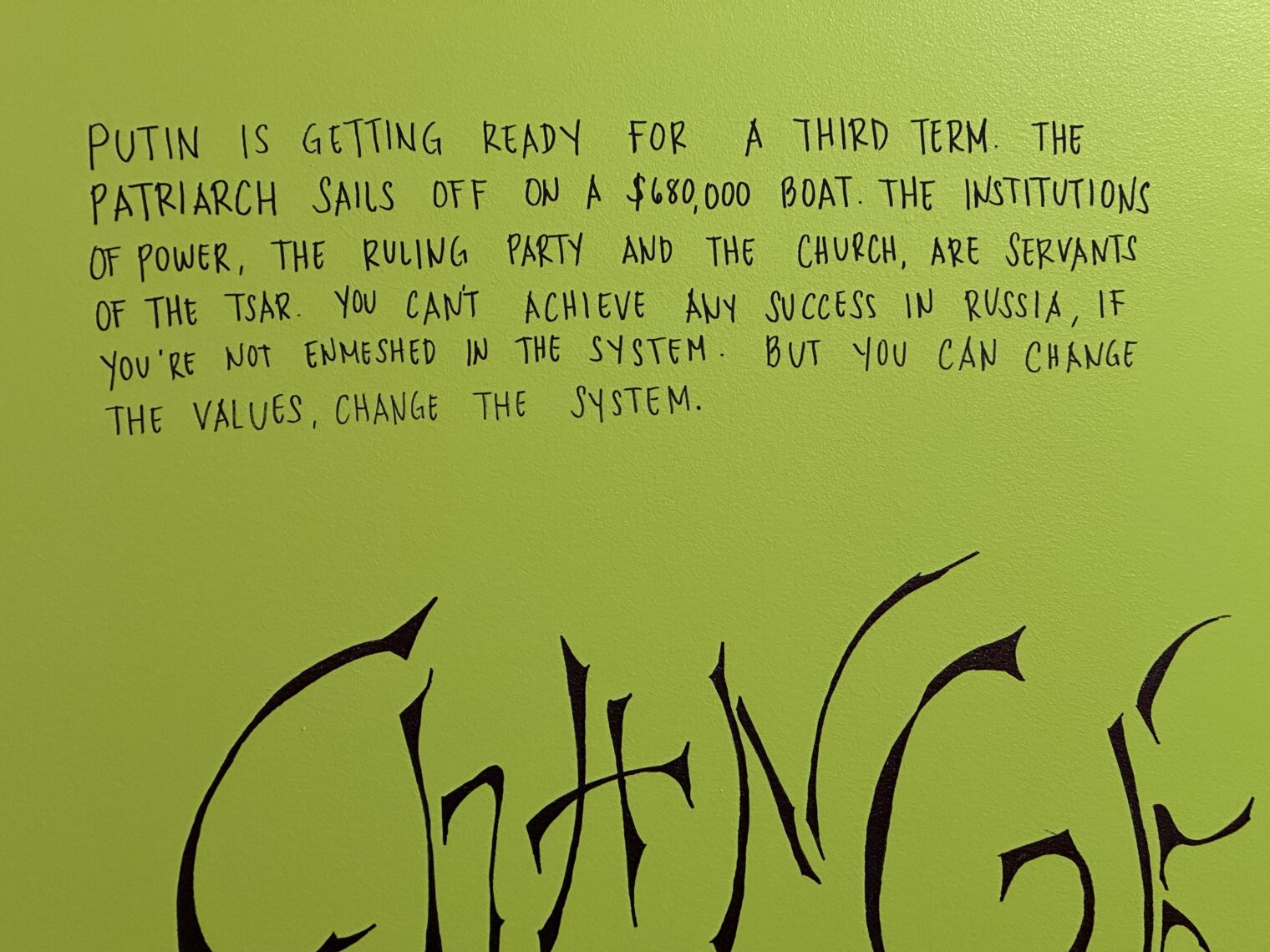

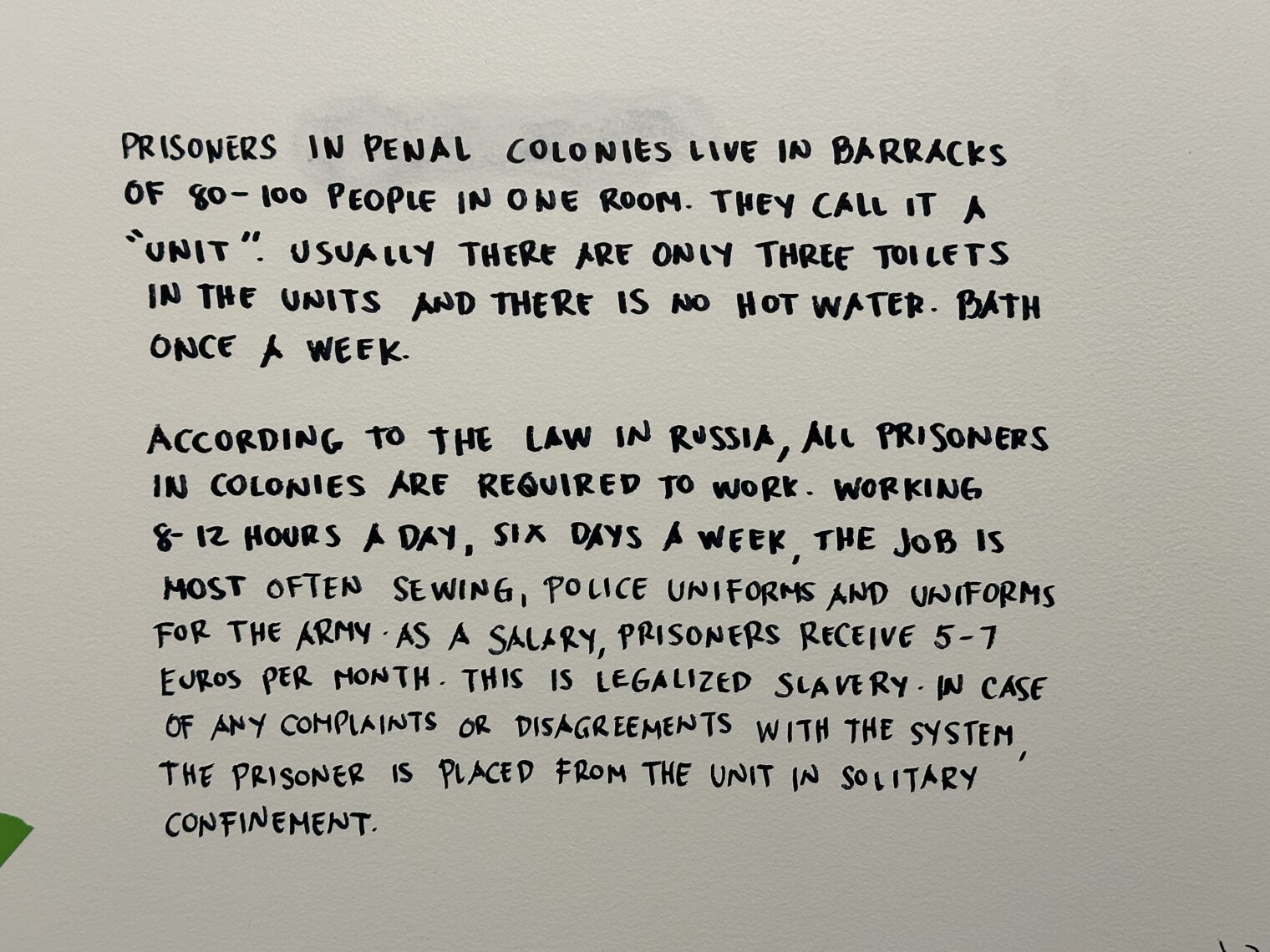
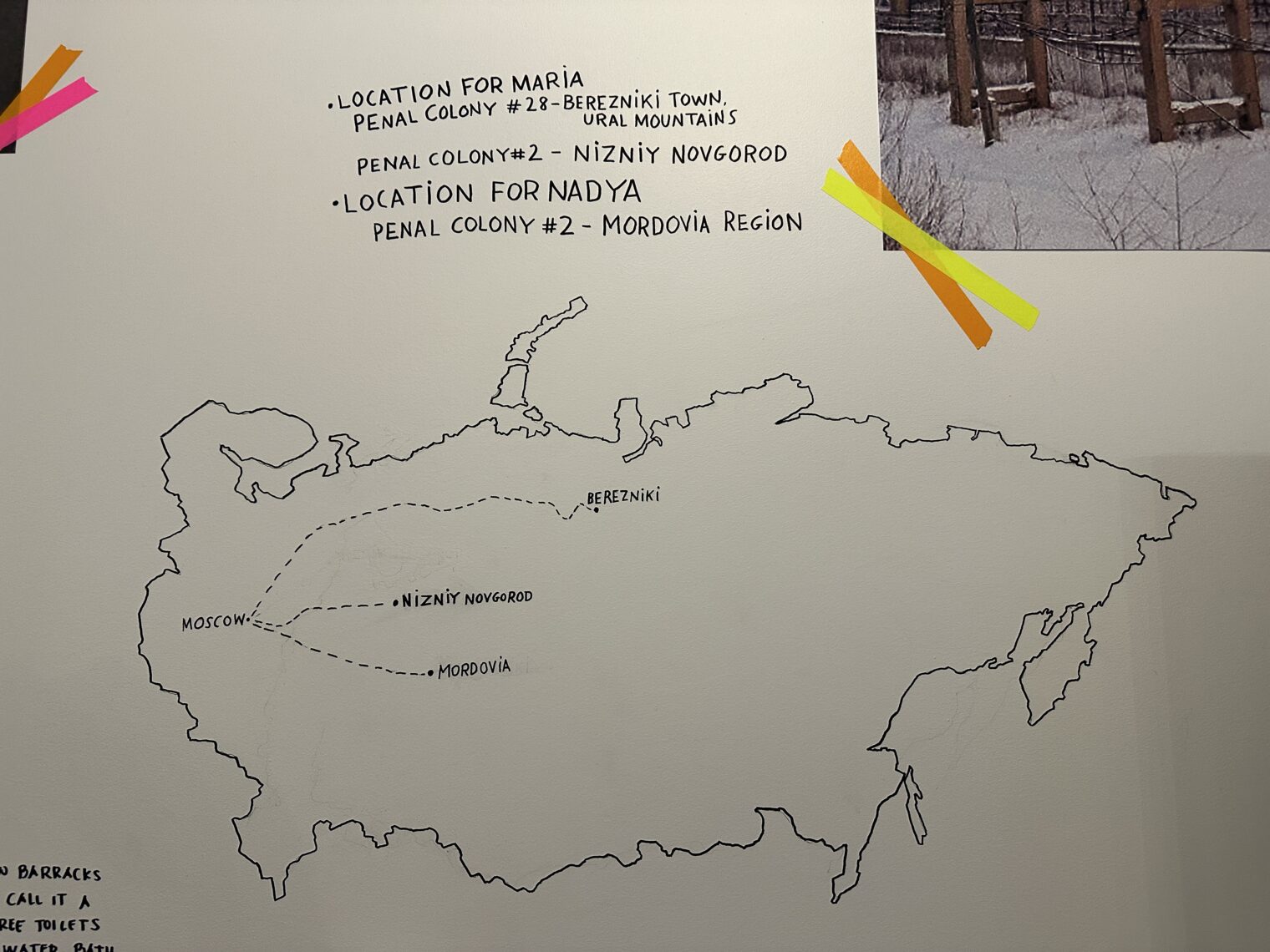
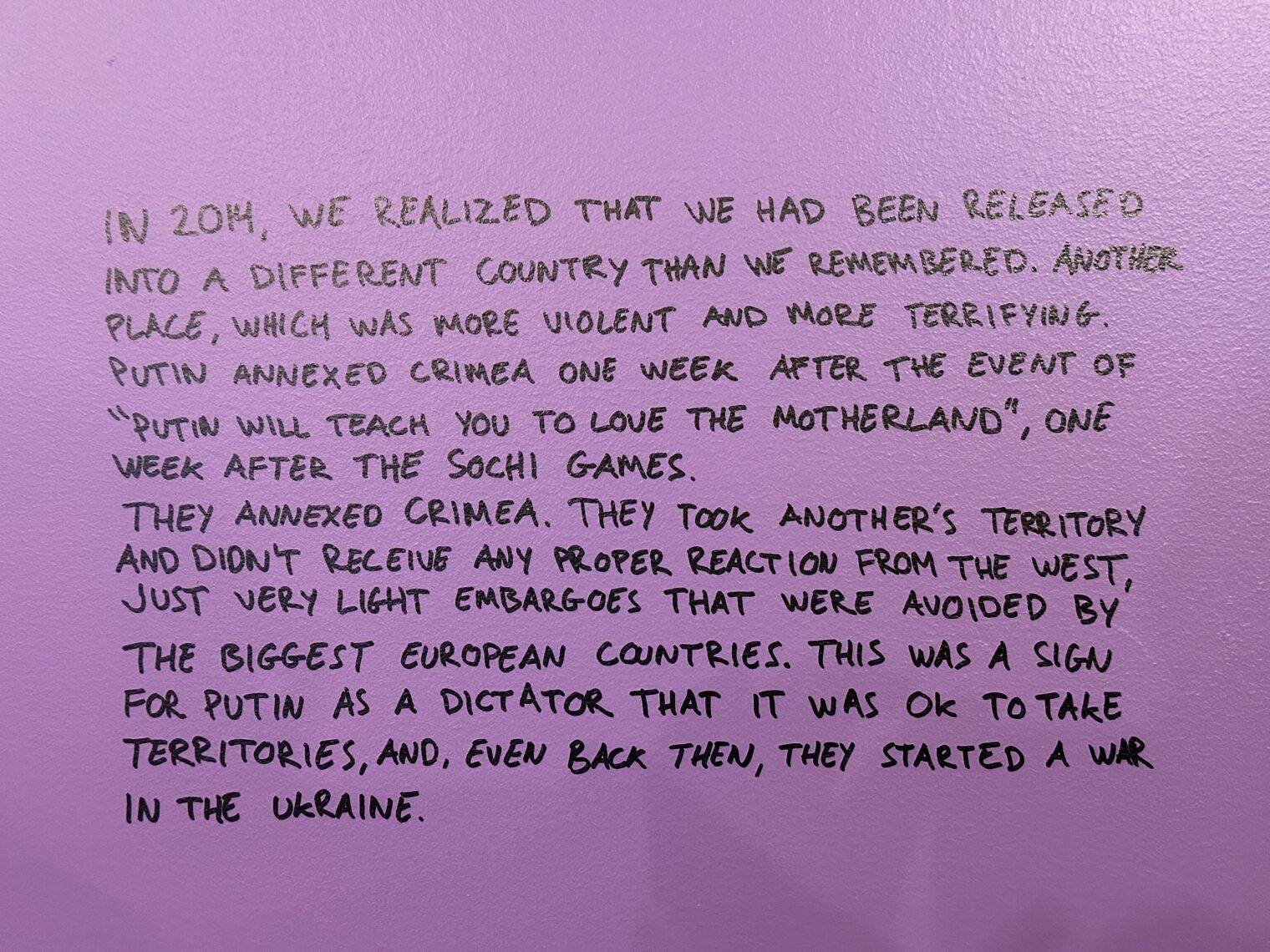
What was one of the punishments that a Pussy Riot member suffered? She was unbanked, exactly as the Canadian truckers who protested forced Covid-19 vaccination were unbanked by Justin Trudeau using “emergency powers” (NYT). (Separately, I met a Canadian who had gingerly approached some of the truckers at the time. “They were the nicest and most peaceful people you ever met,” he said. “I was afraid to stay too long, though, because I didn’t want to become a target myself.”)
Pussy Riot’s war under the sacred Rainbow Flag was covered:
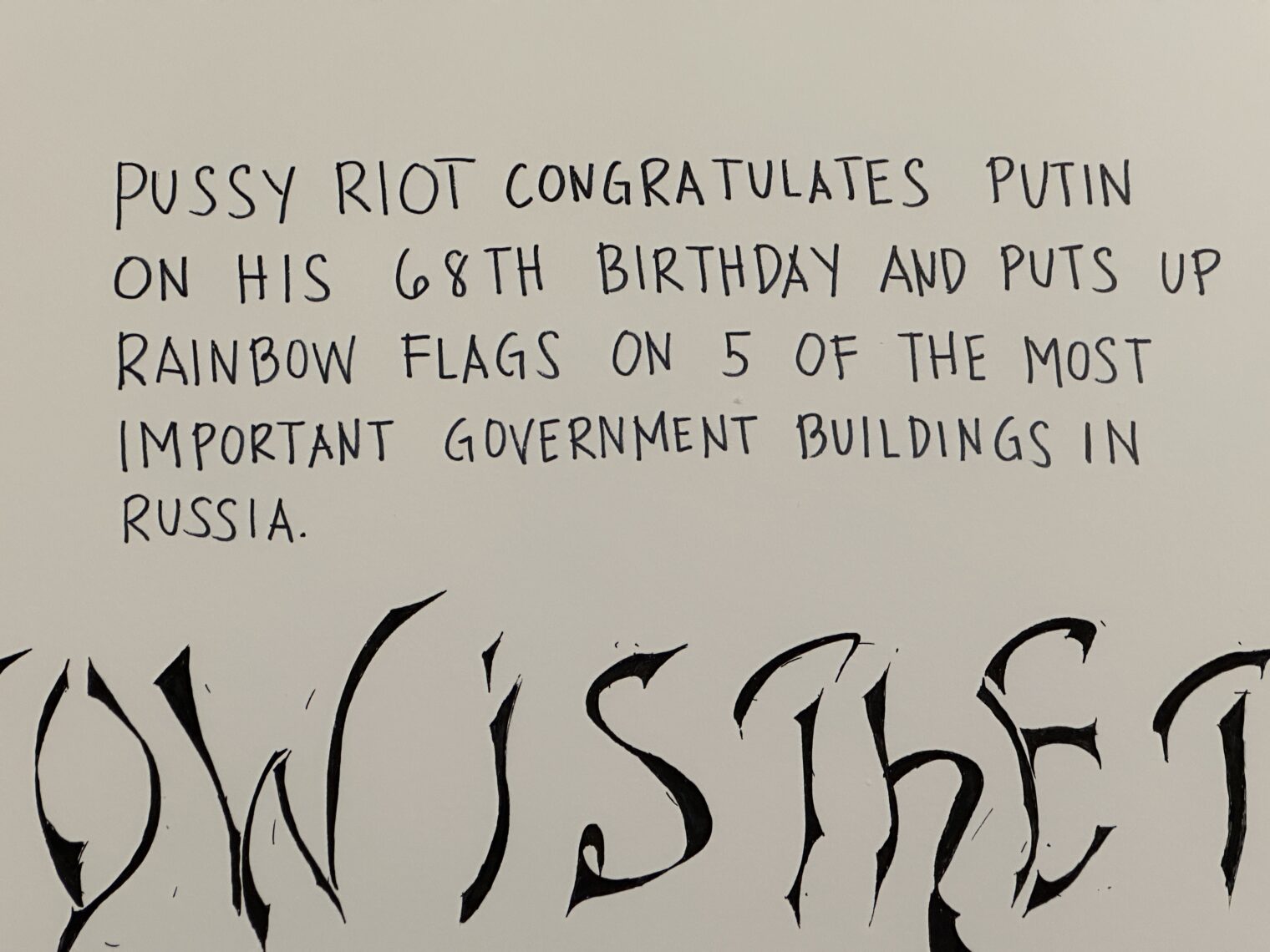
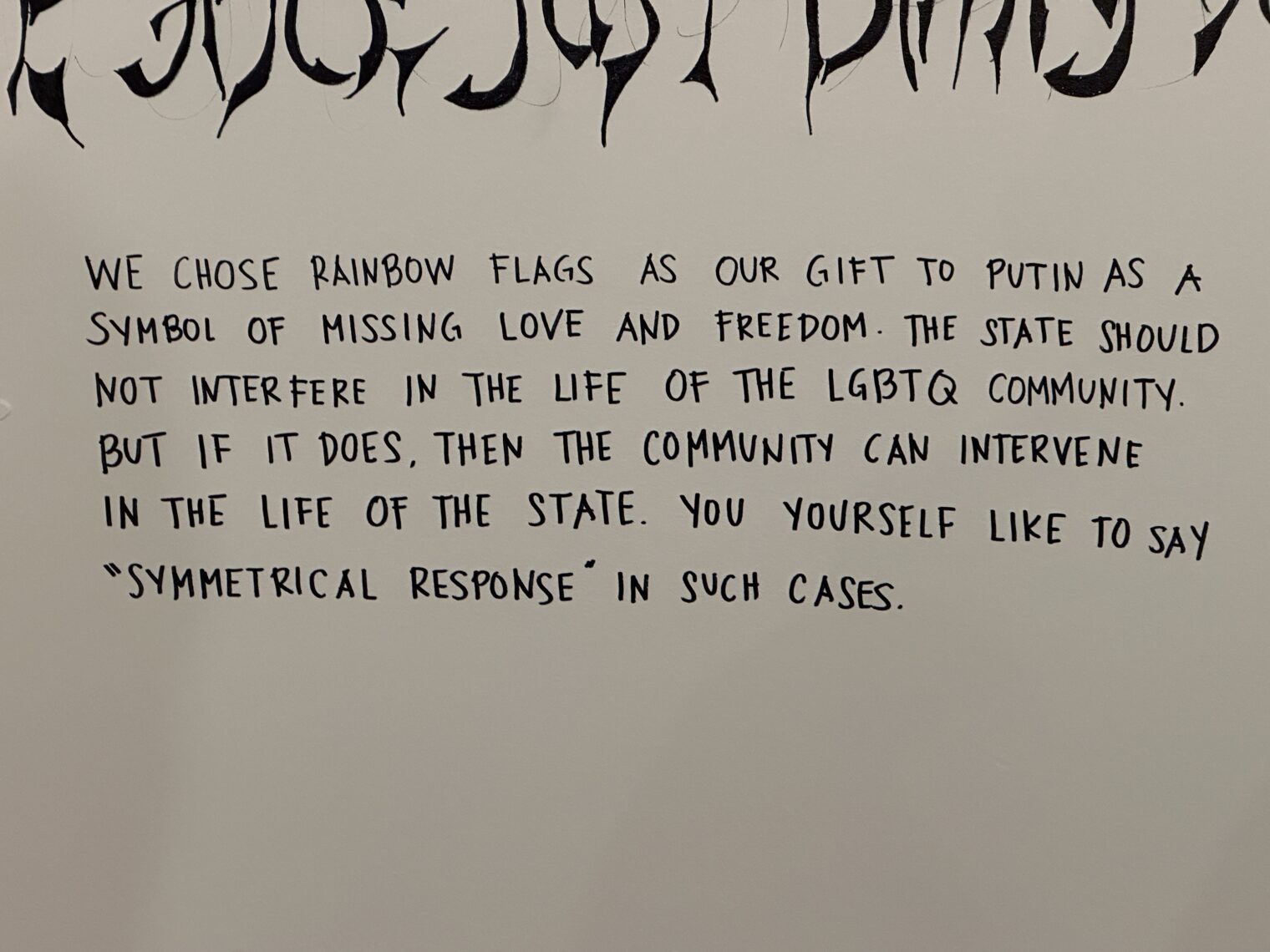
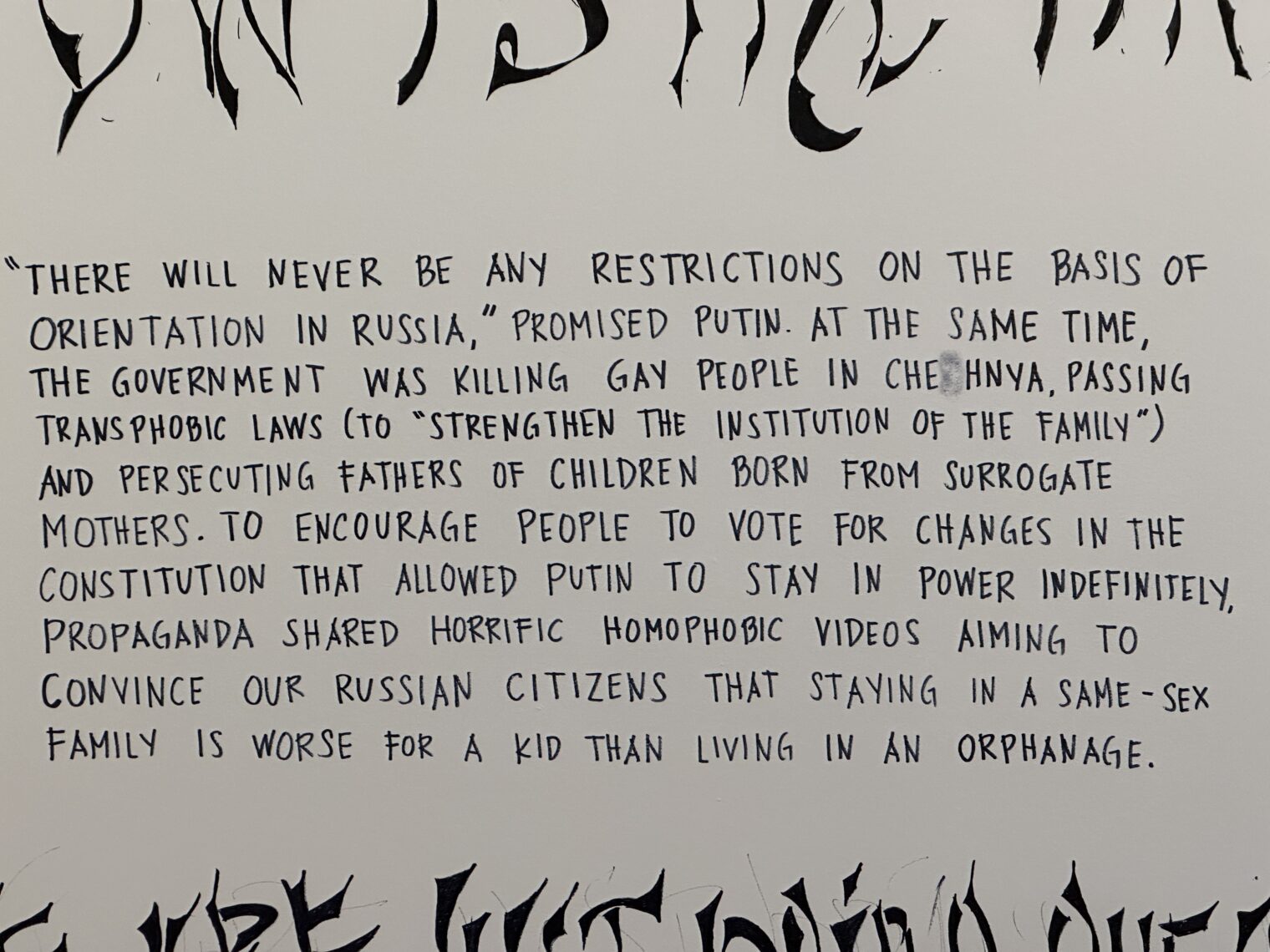
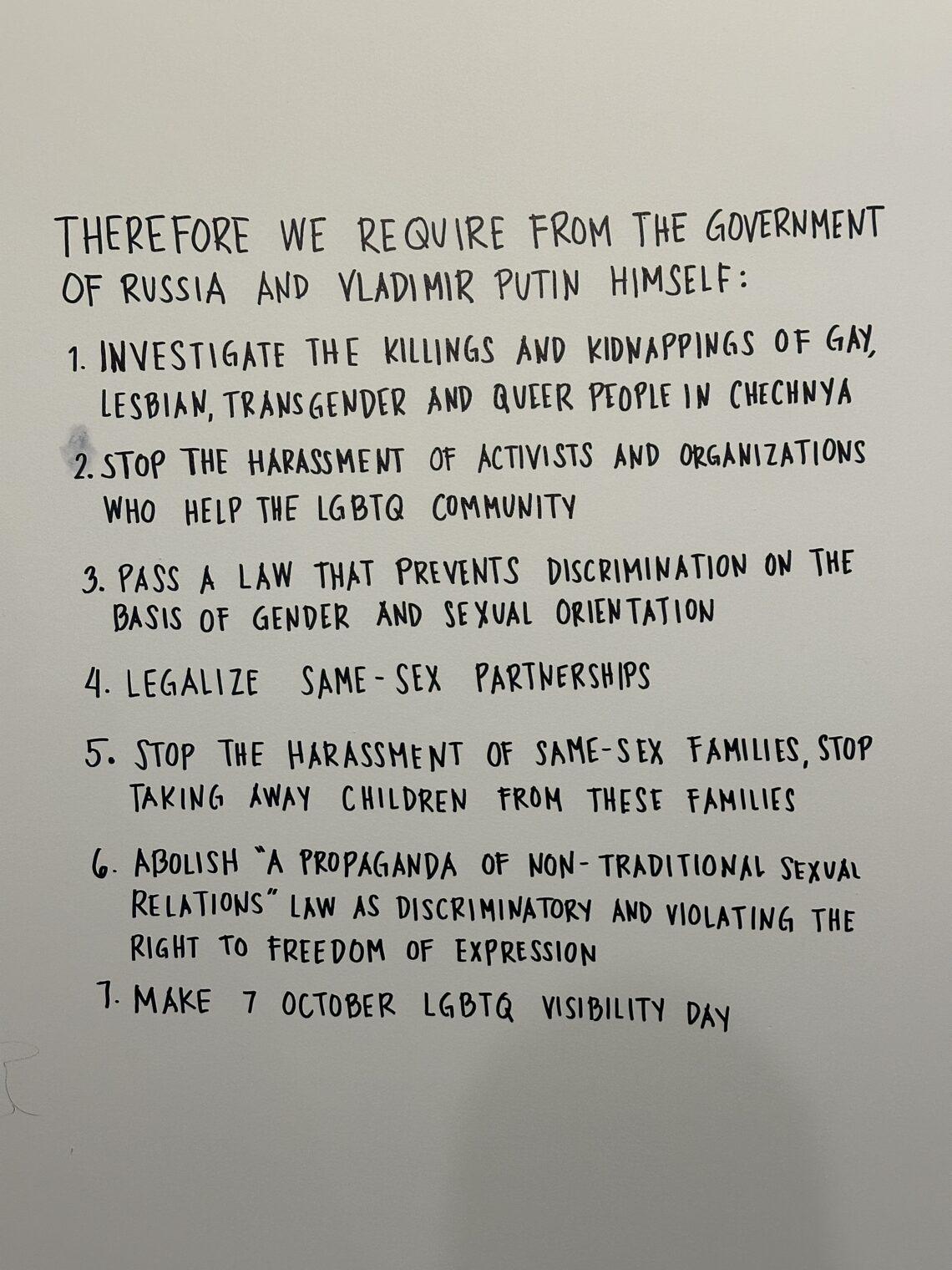
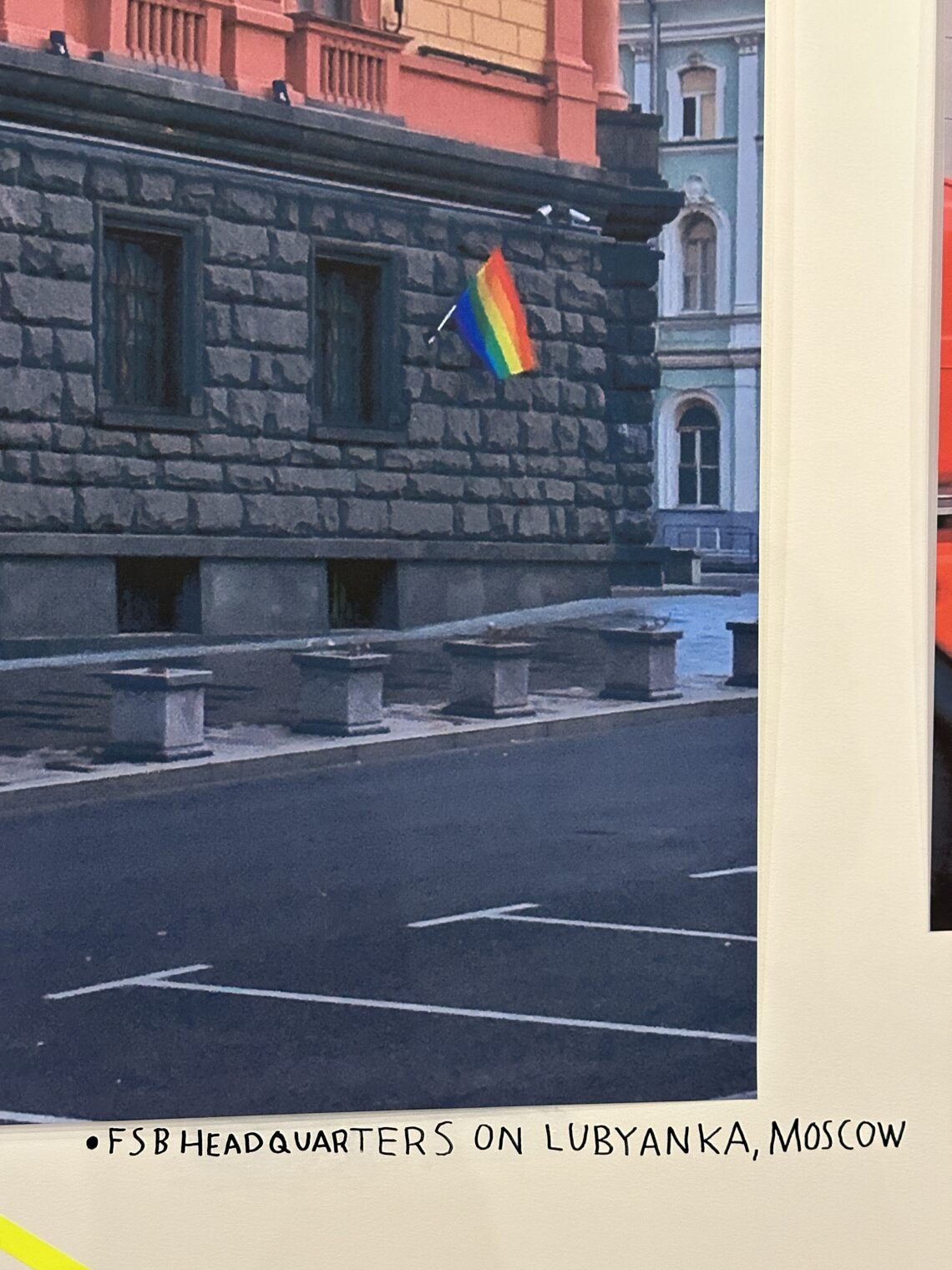
(It is unclear to me how Putin can be considered responsible for “killings and kidnappings of gay, lesbian, transgender and queer people in Chechnya“. Russia has had tremendous difficulty in its attempts to control what happens in Chechnya, resulting in at least two full-scale wars.)
The public were invited to write down and post their thoughts in response to the exhibition. Most seemed to have been written by Anglophones. Almost nobody seemed to be thinking about Vladimir Putin, Ukraine, the lives of 2SLGBTQQIA+ Russians, or any of the other issues raised by Pussy Riot. Here are some of the notes that were off the main topic:
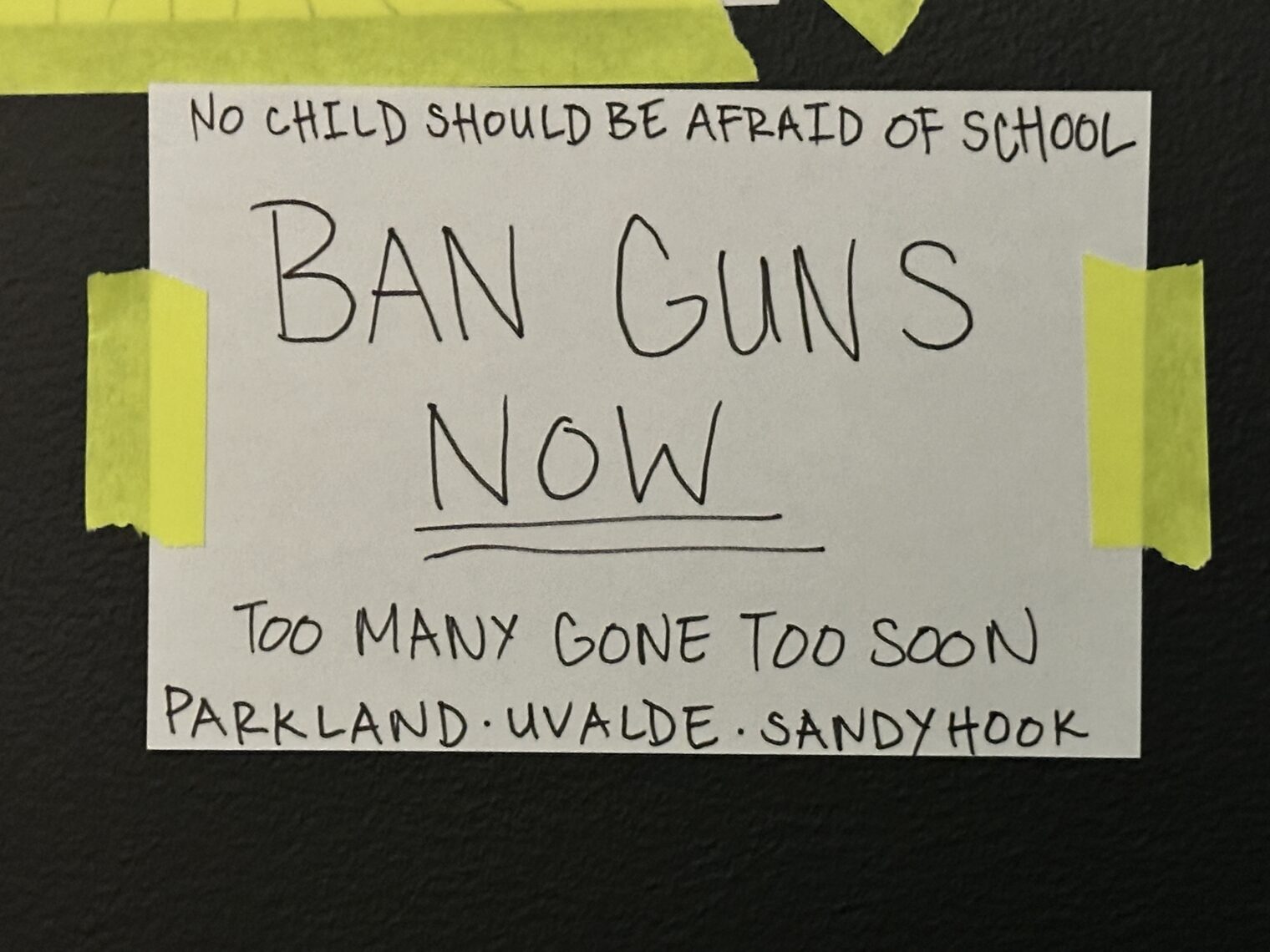
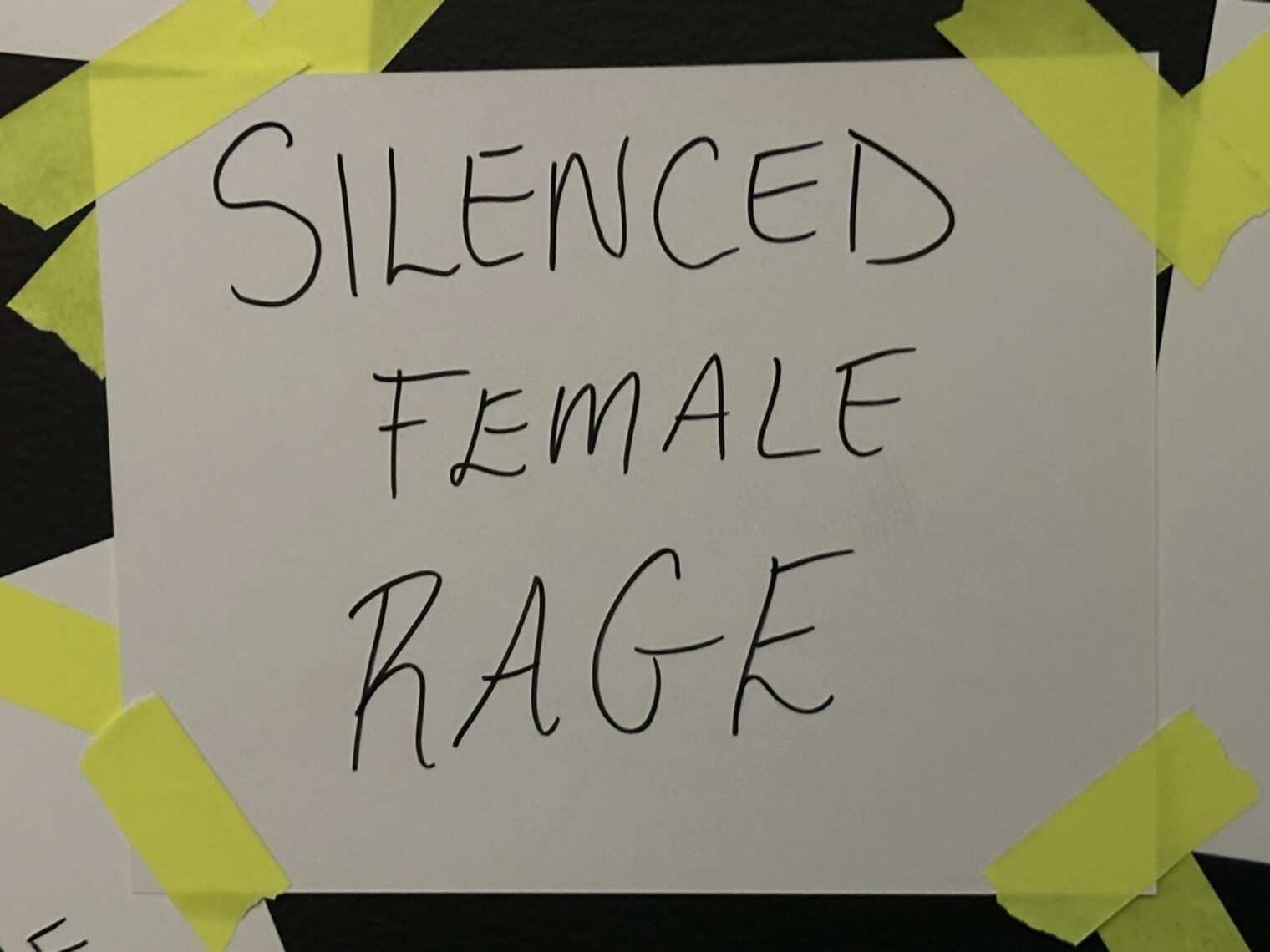
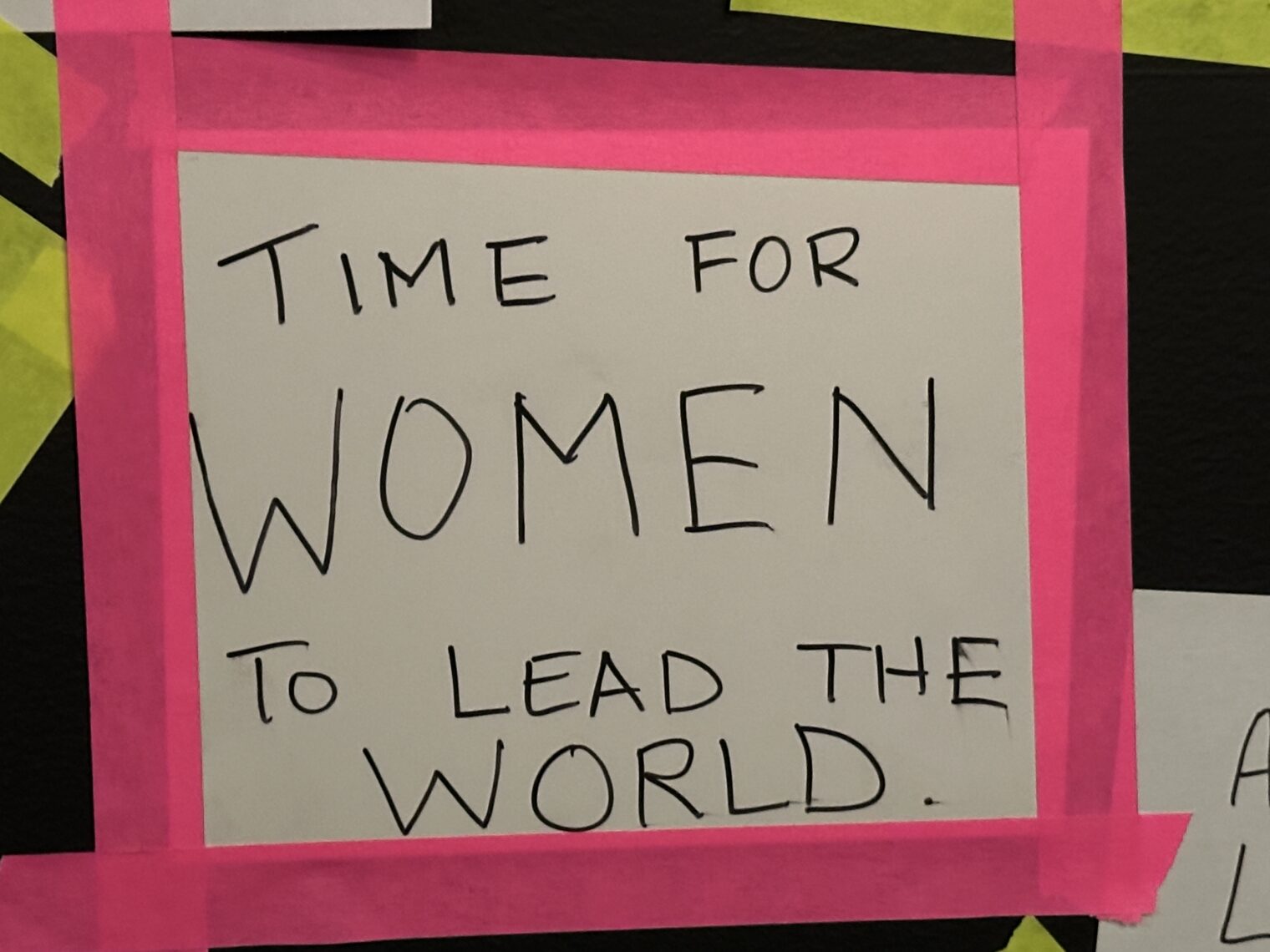
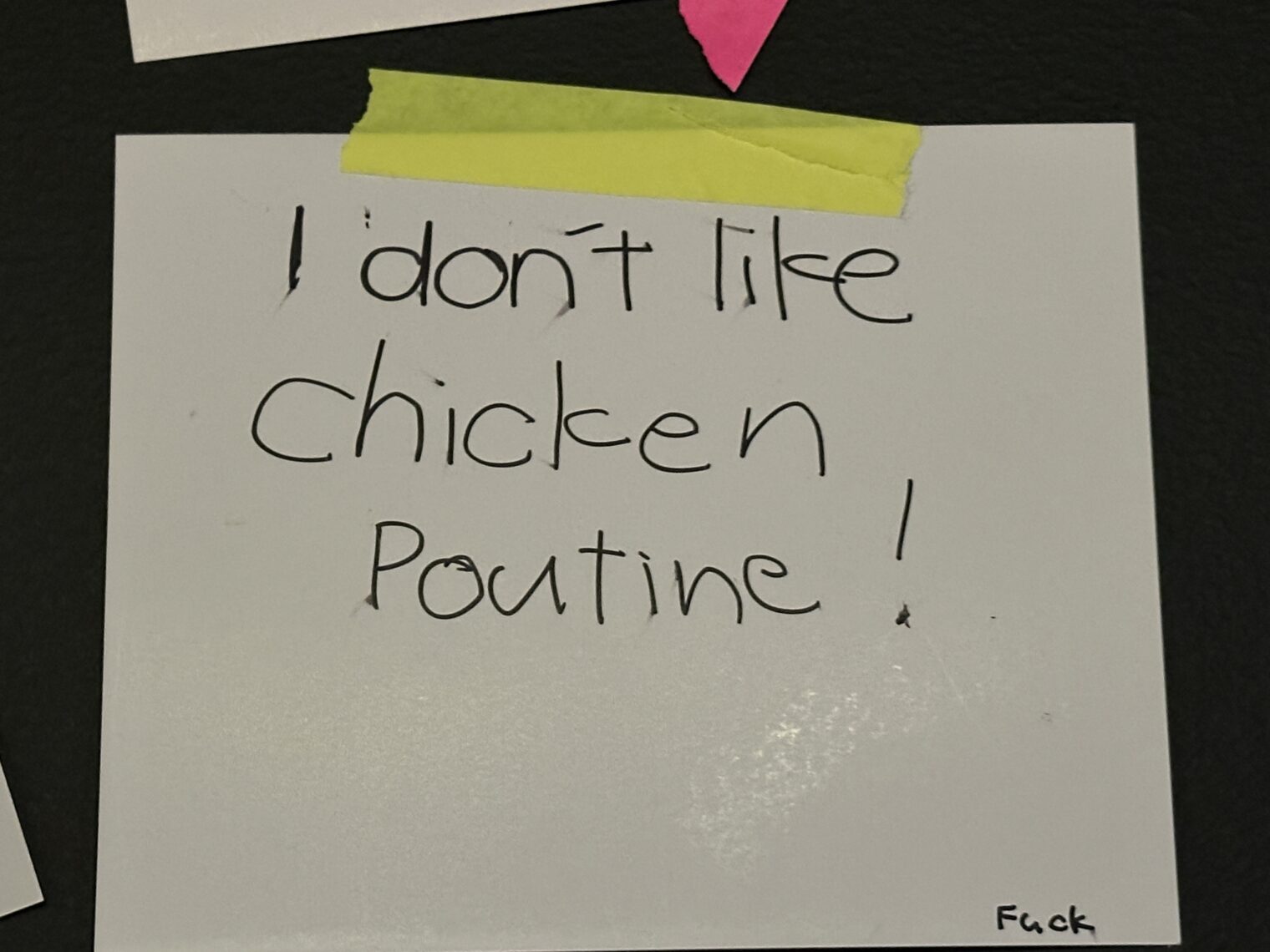
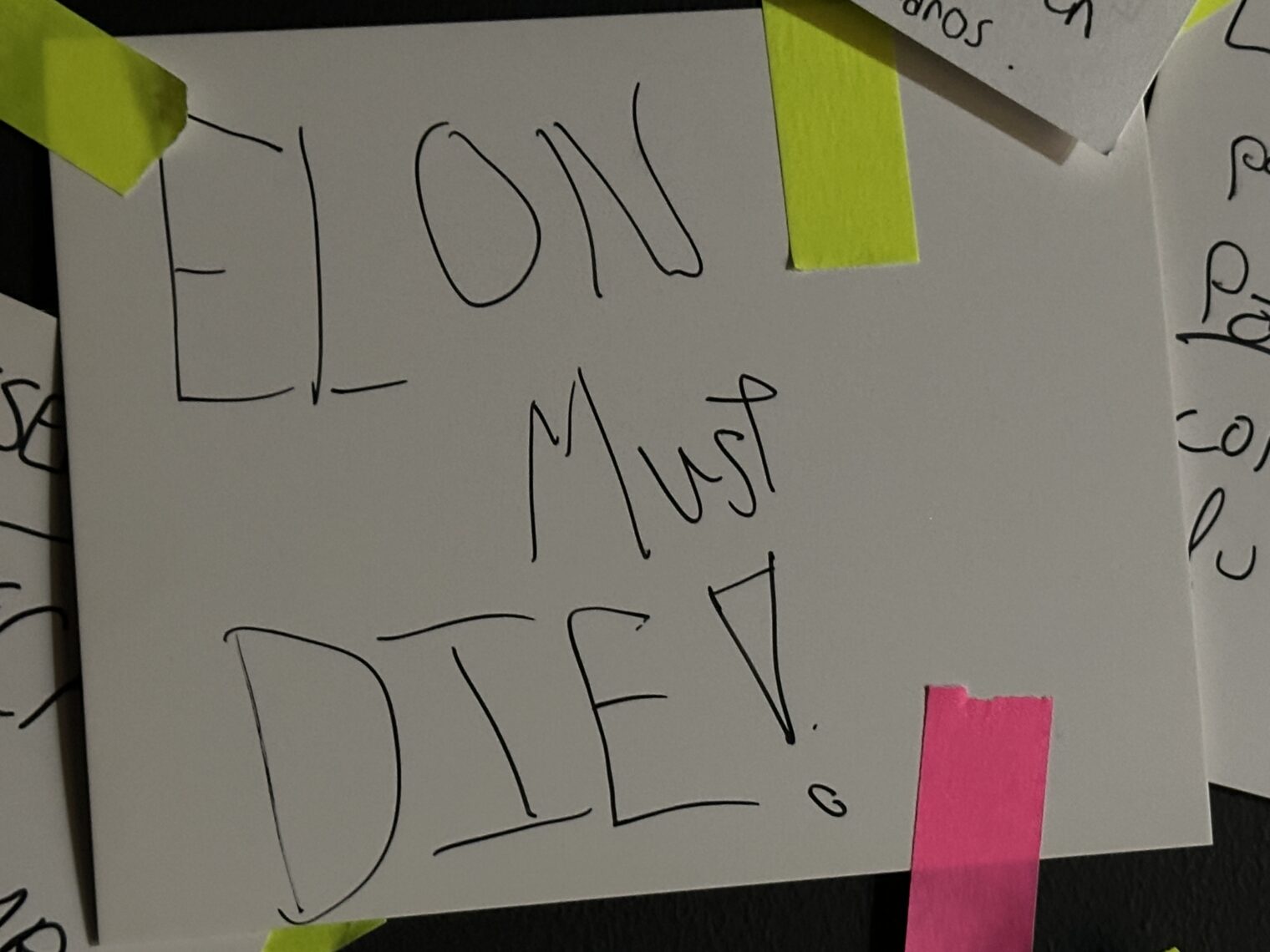
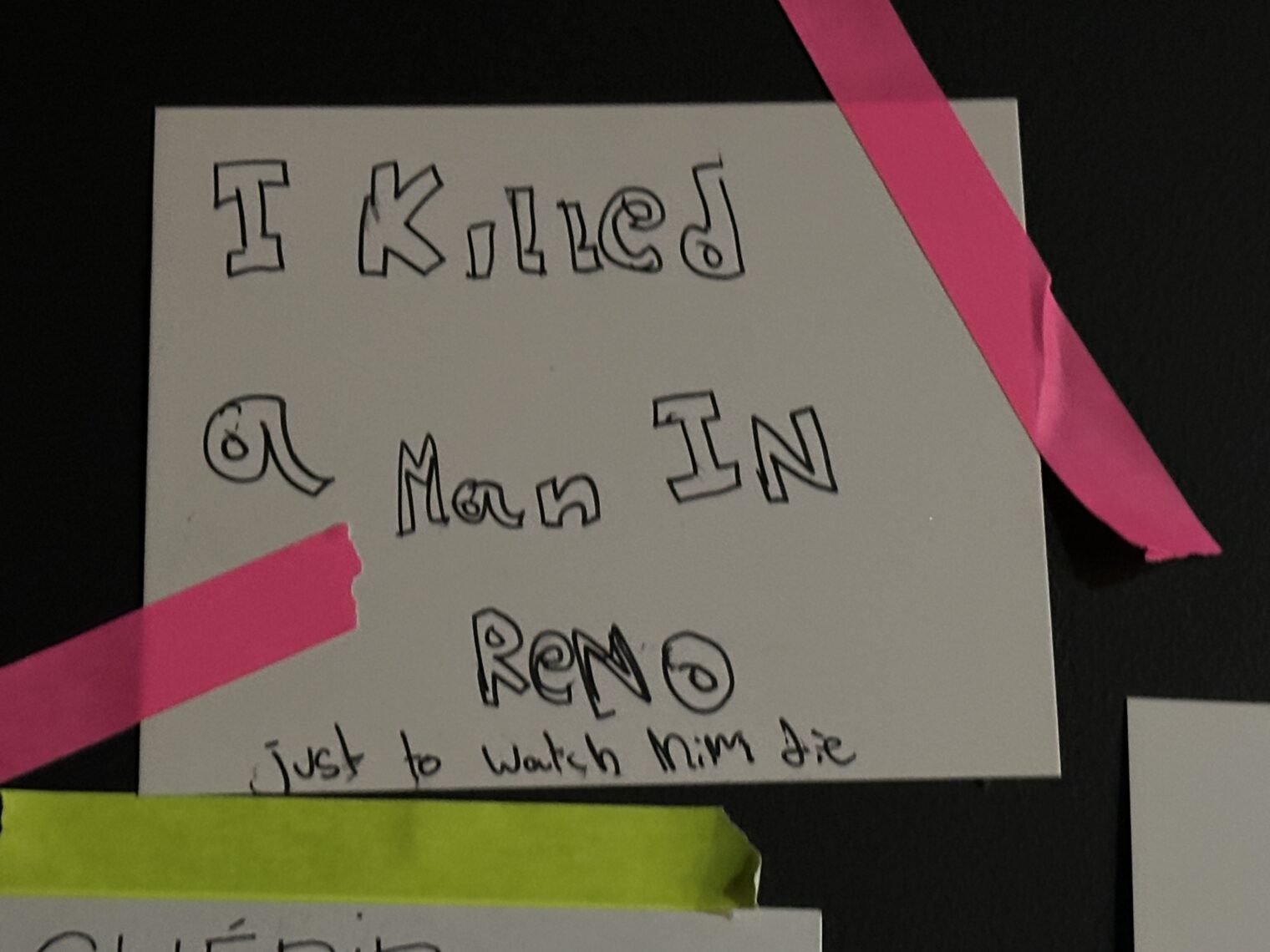
What were a plurality of the signs about? Here’s a sampling:
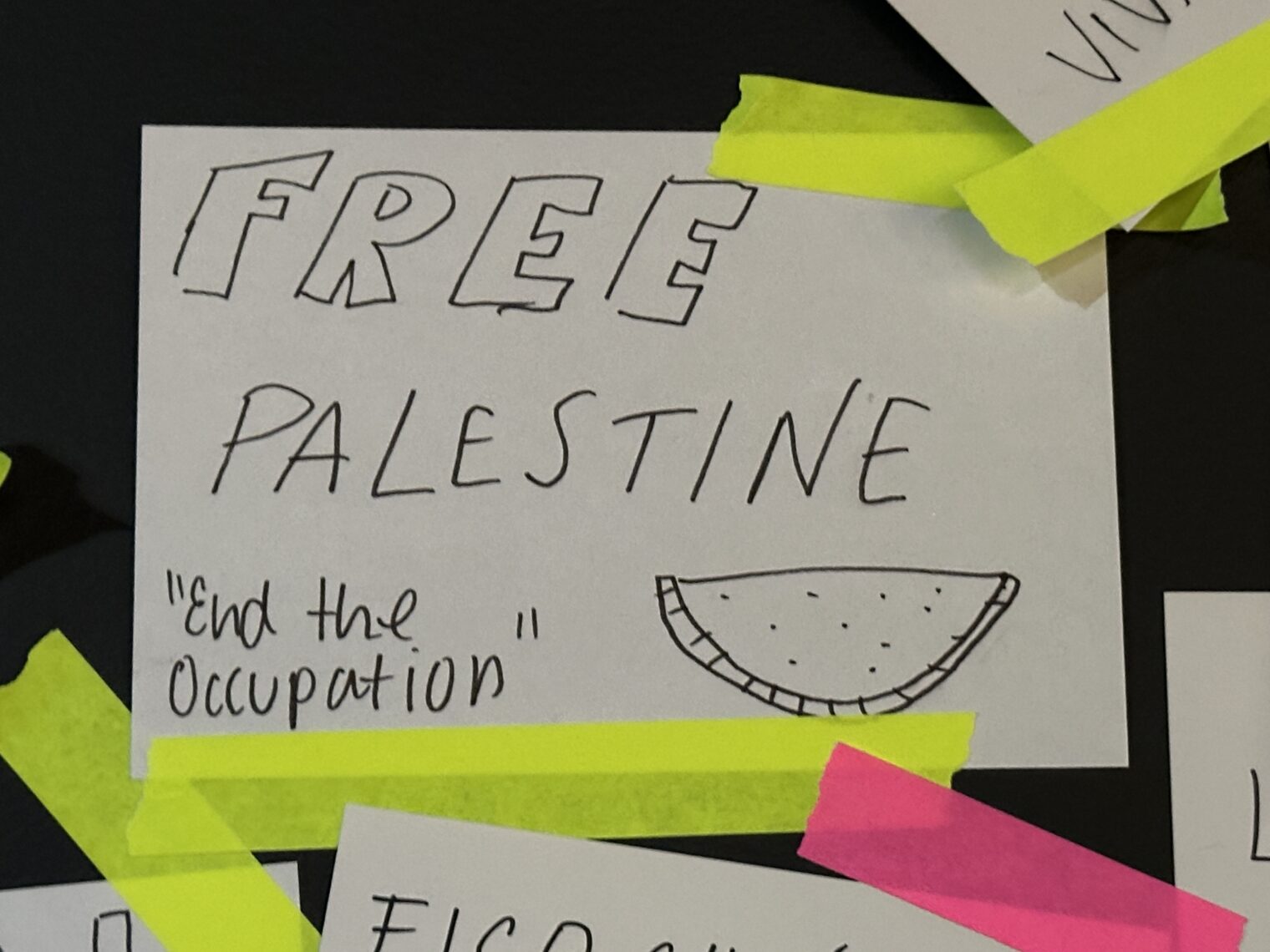
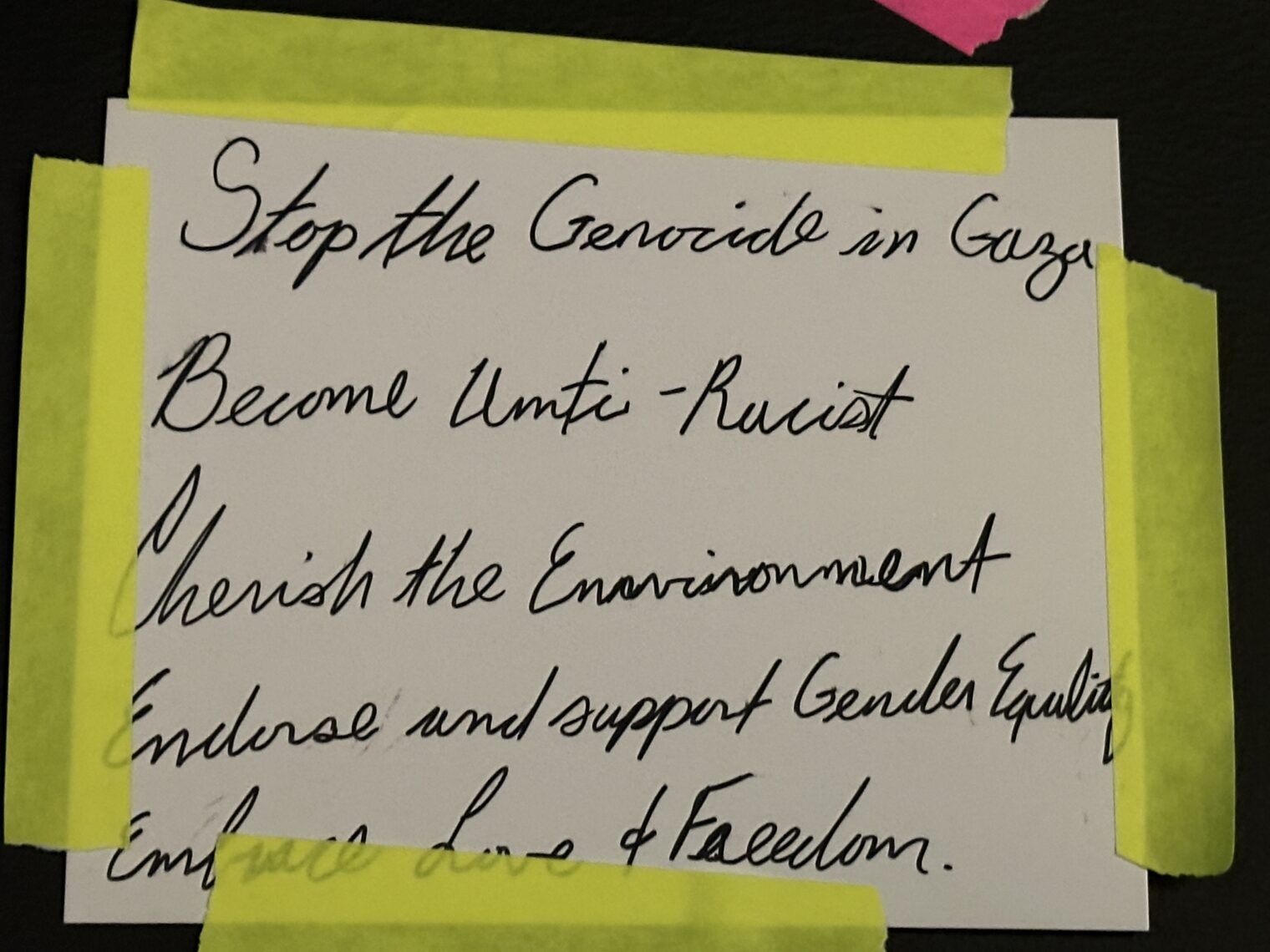
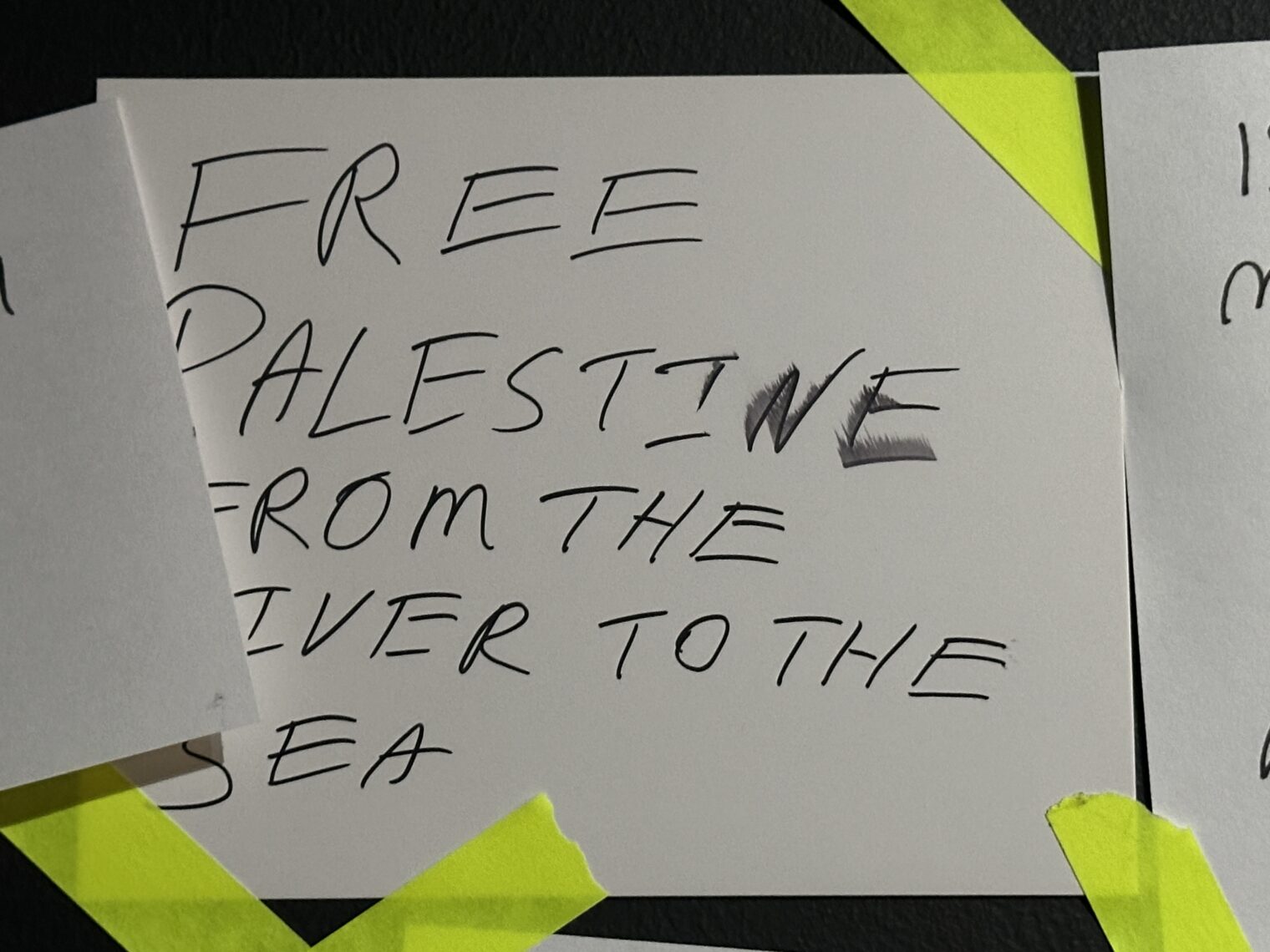
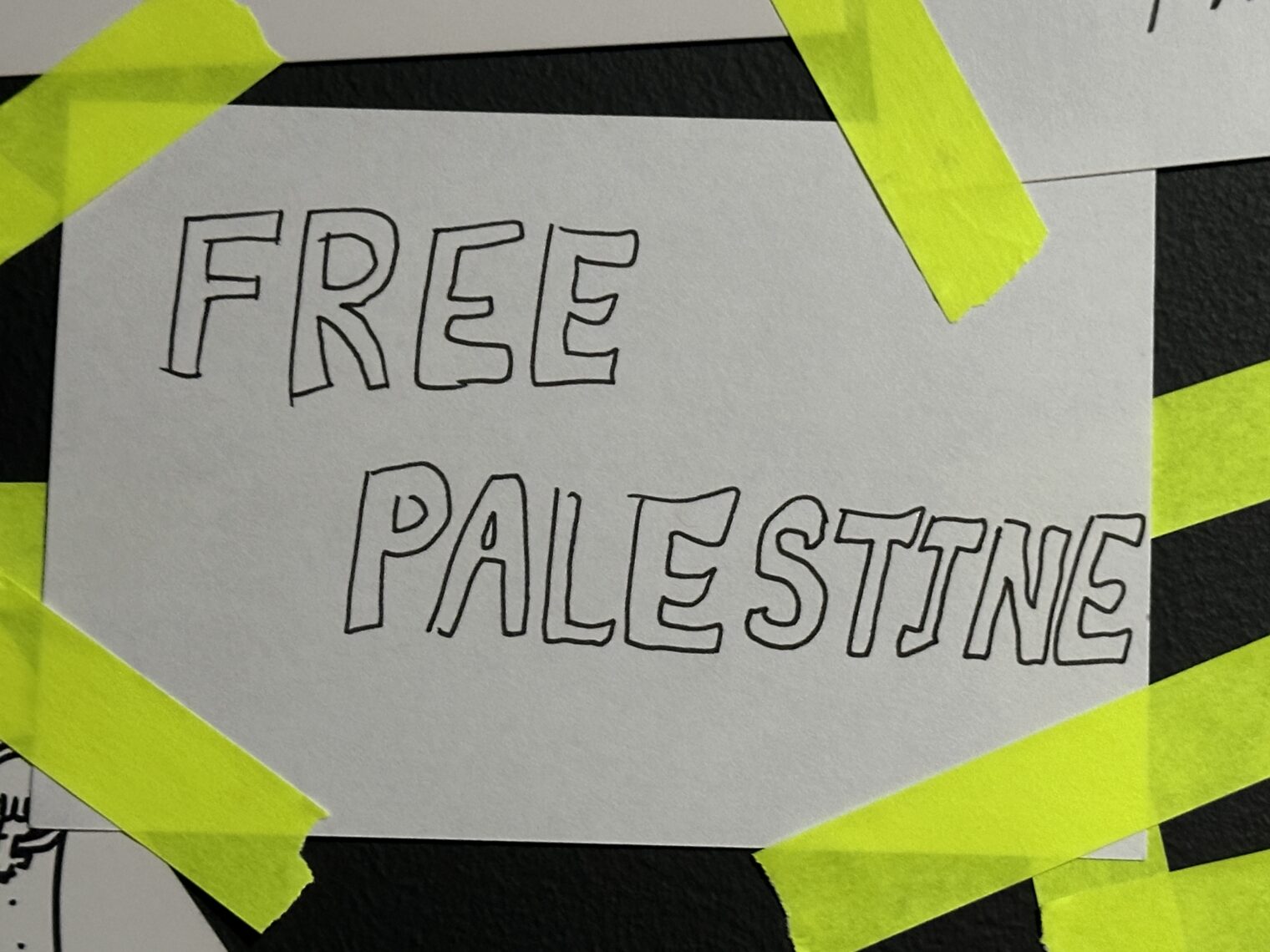
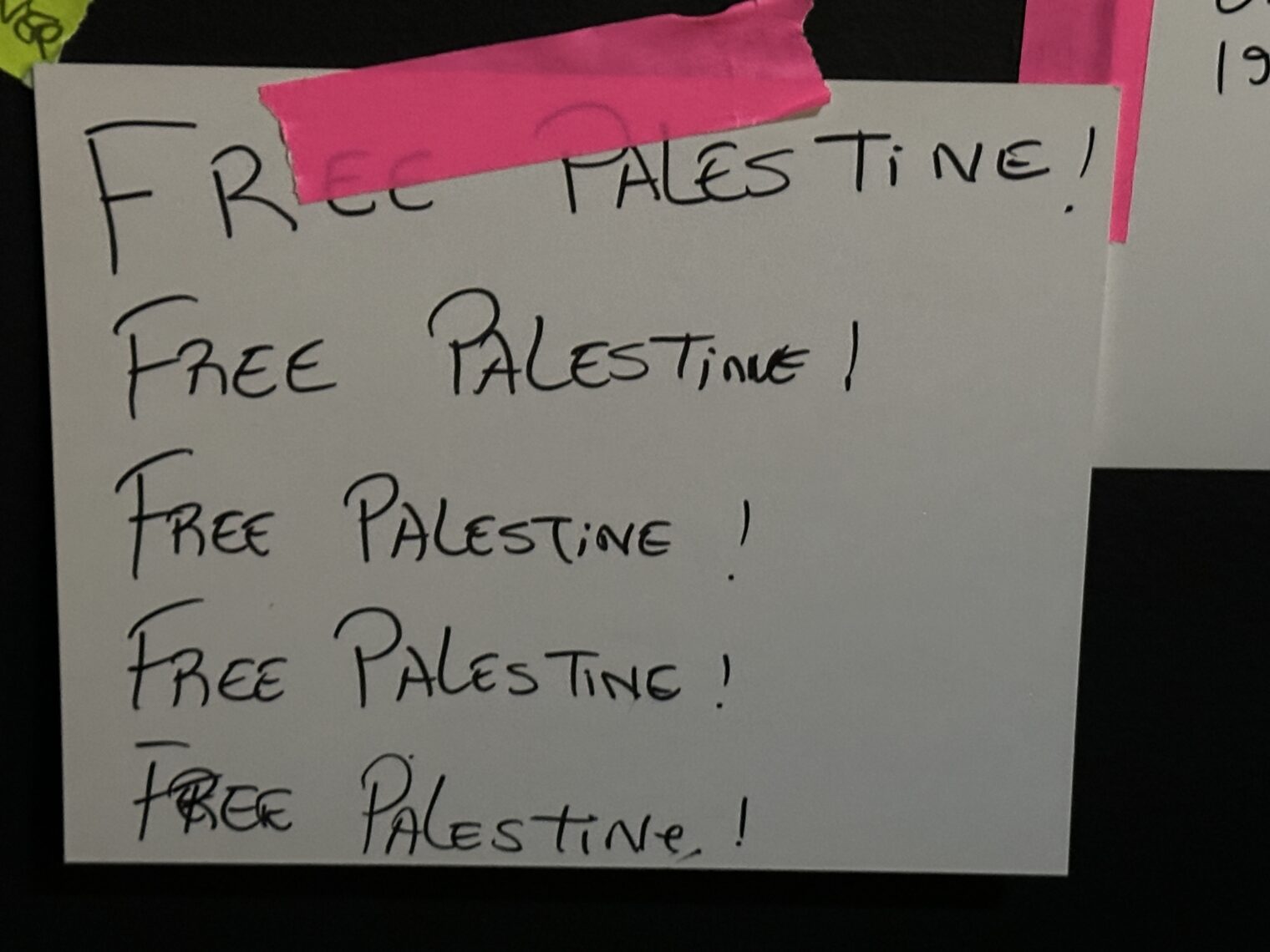
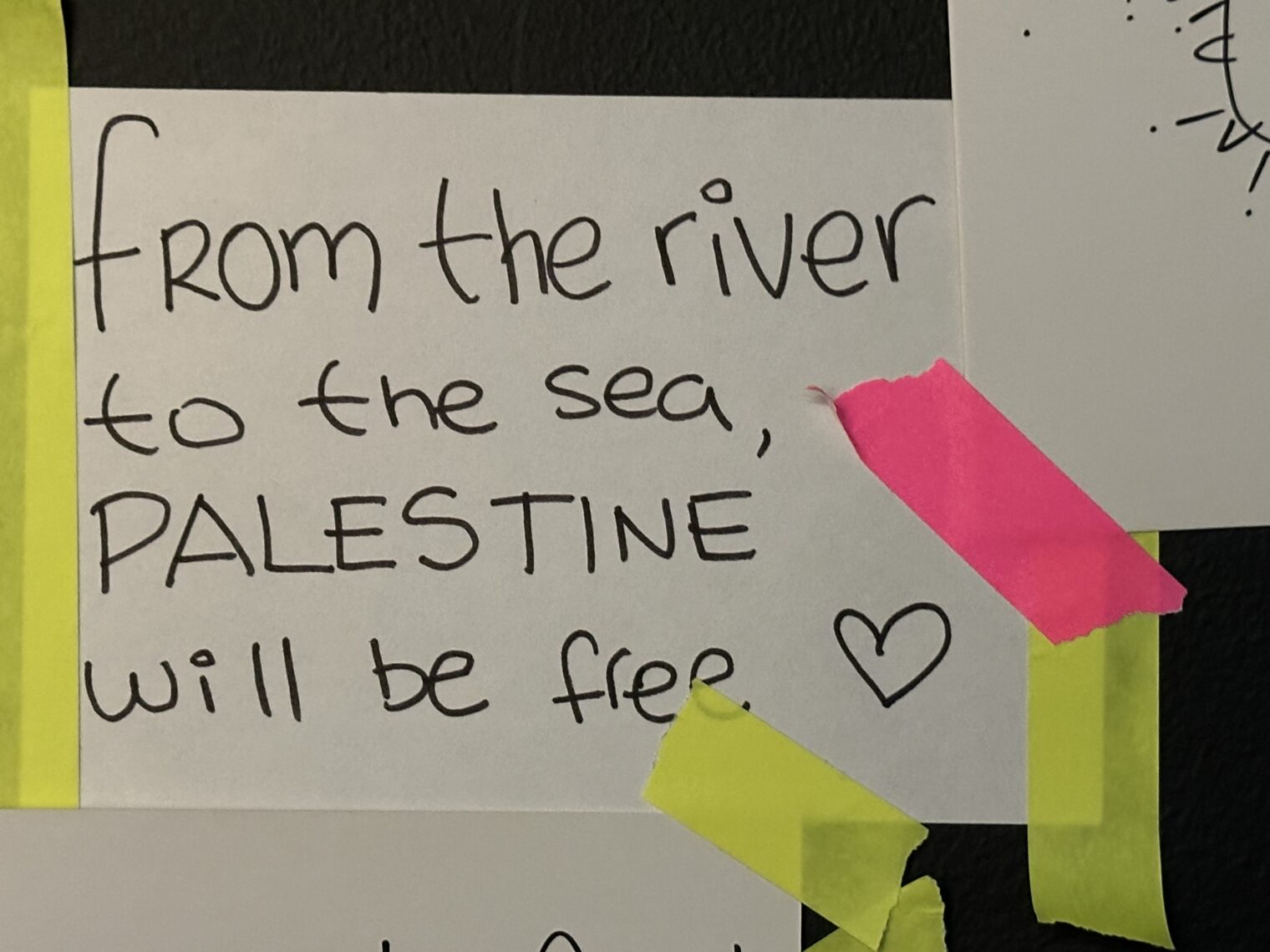
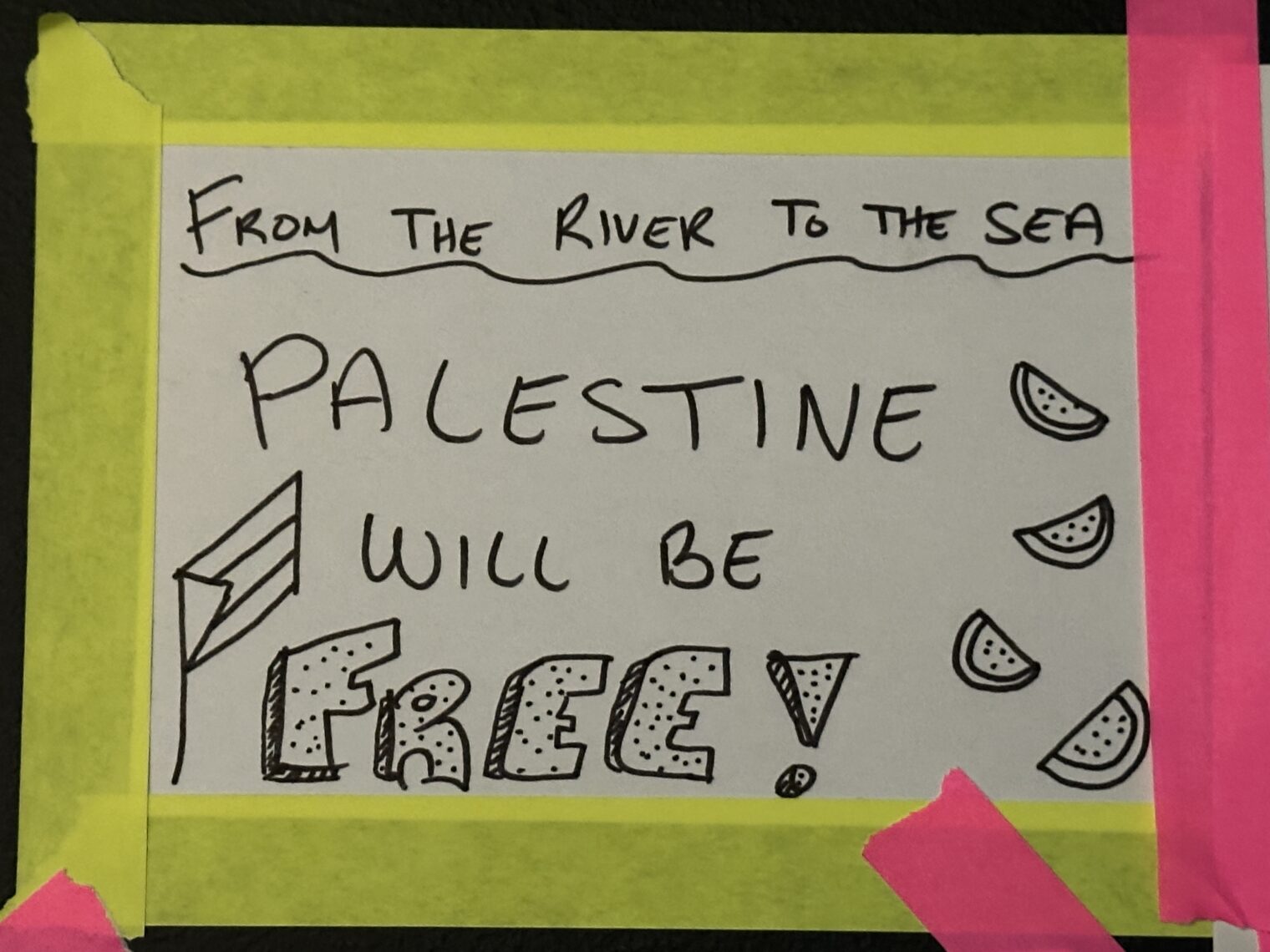
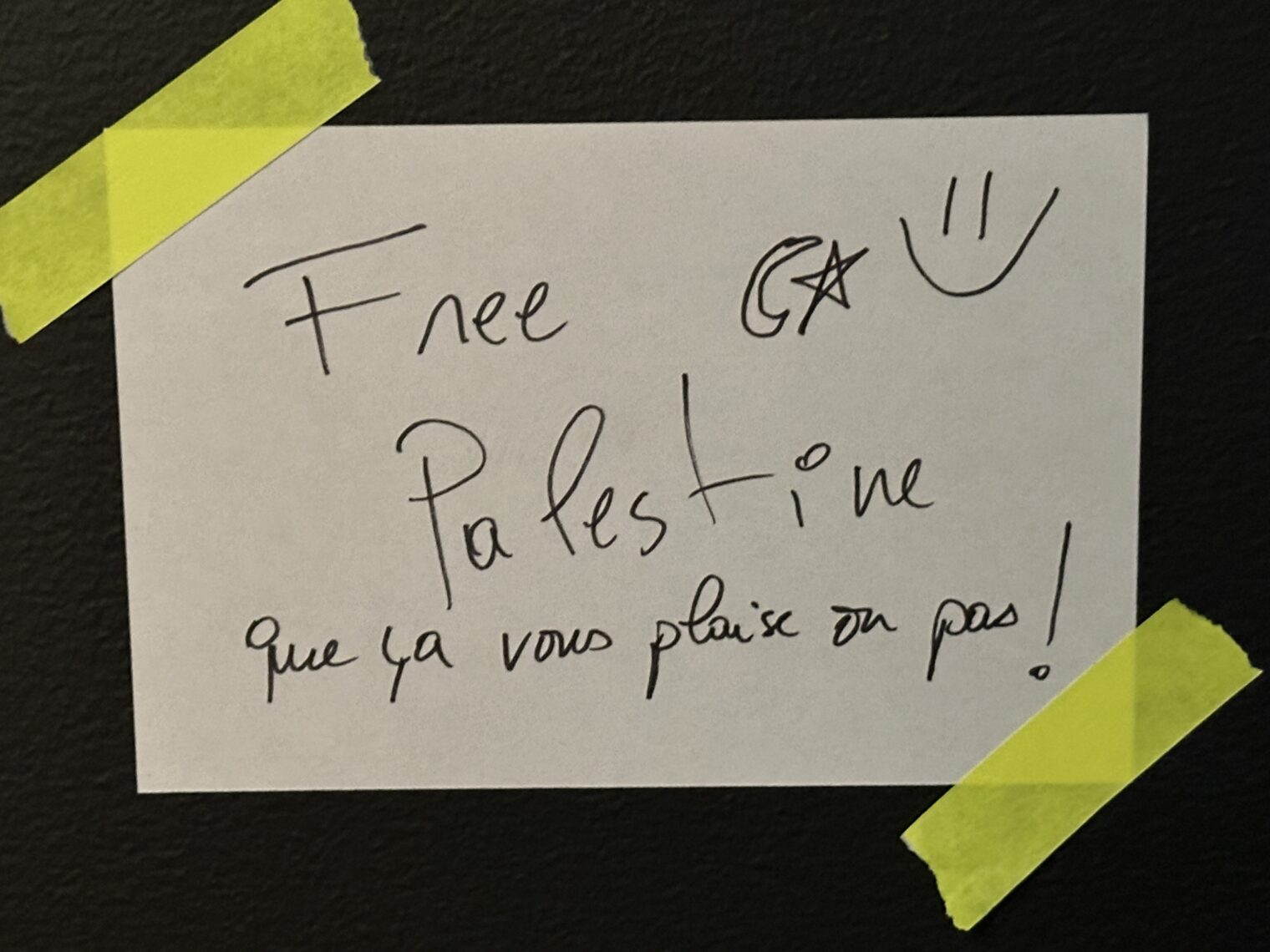
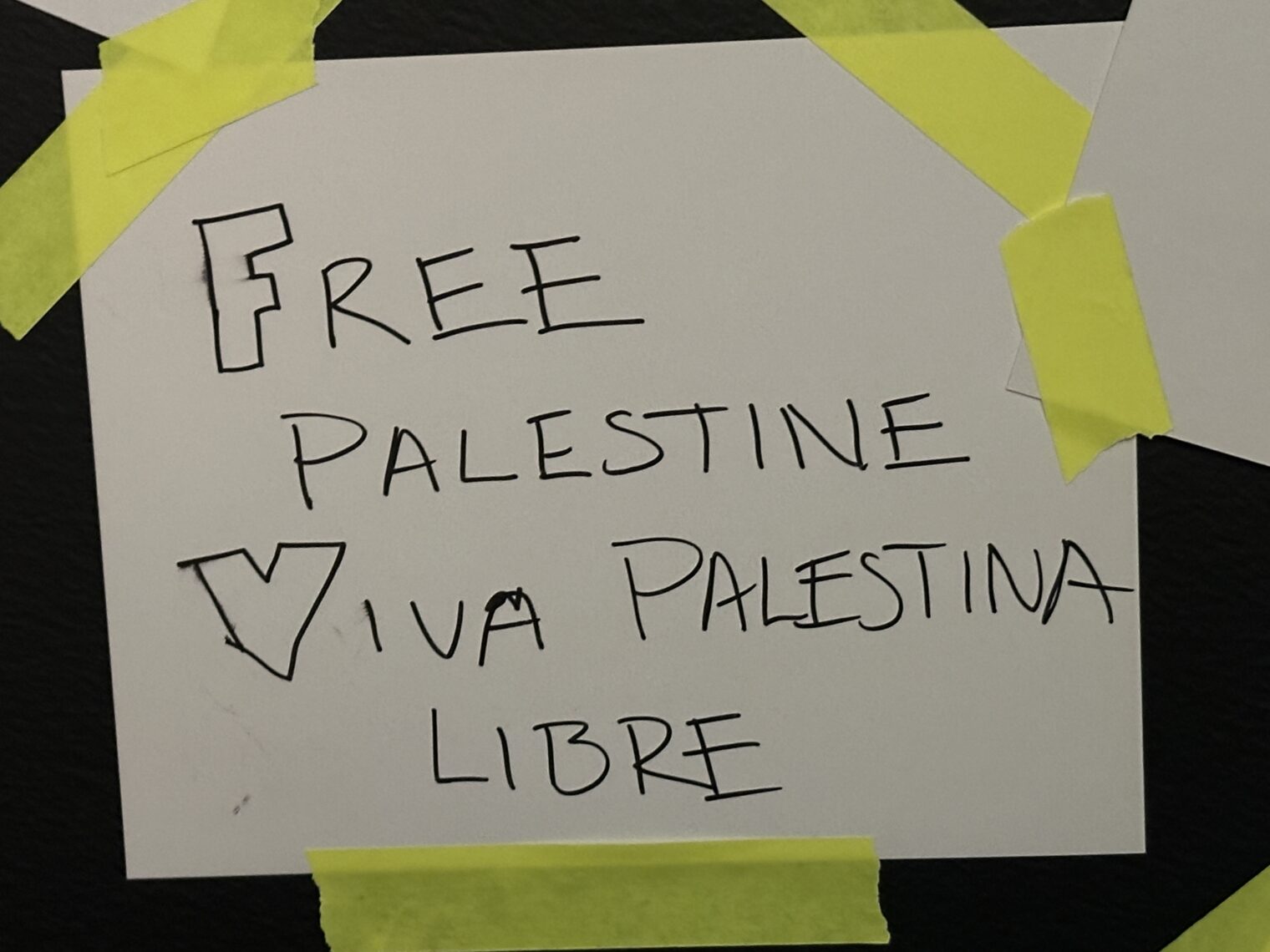
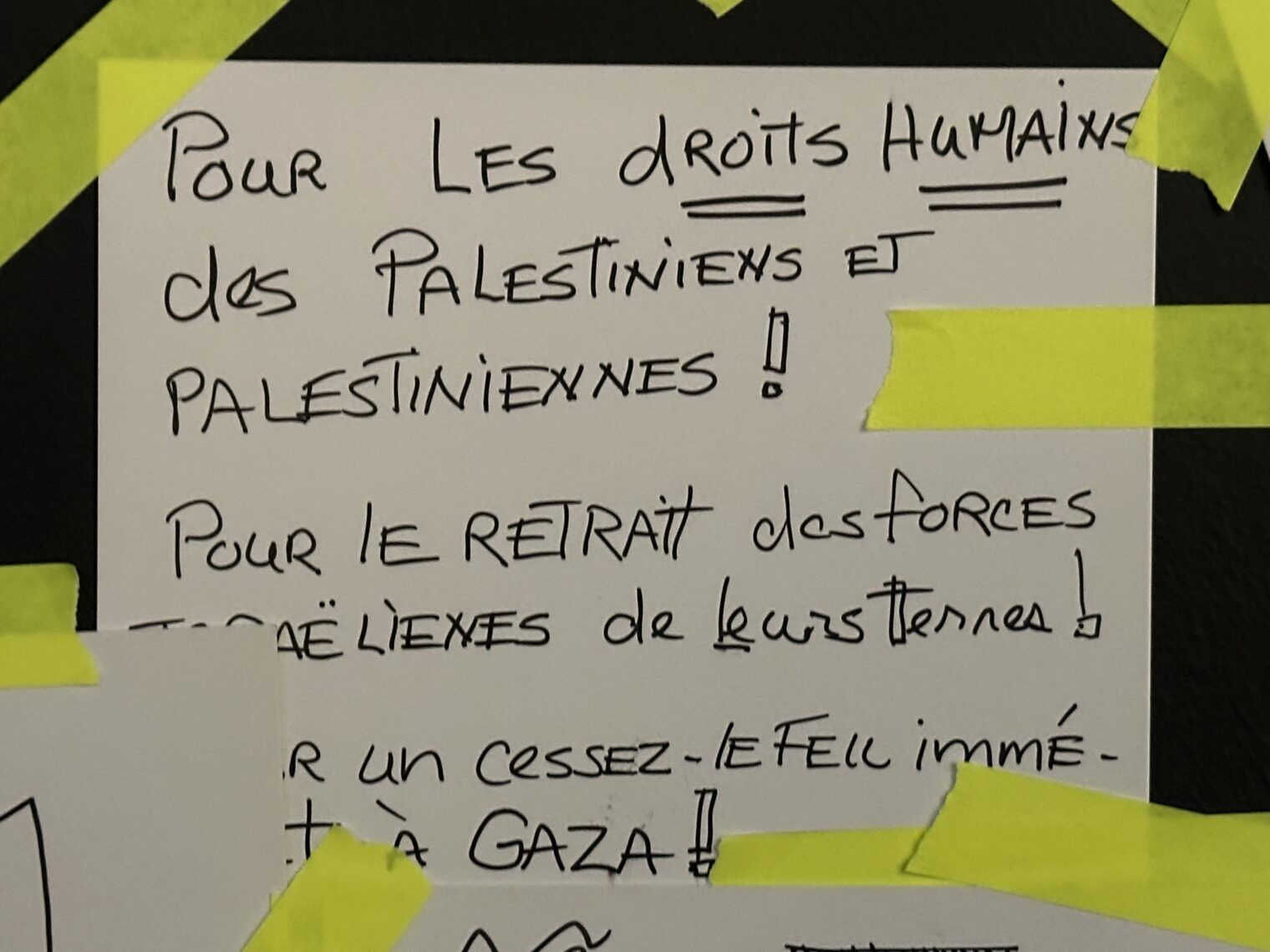
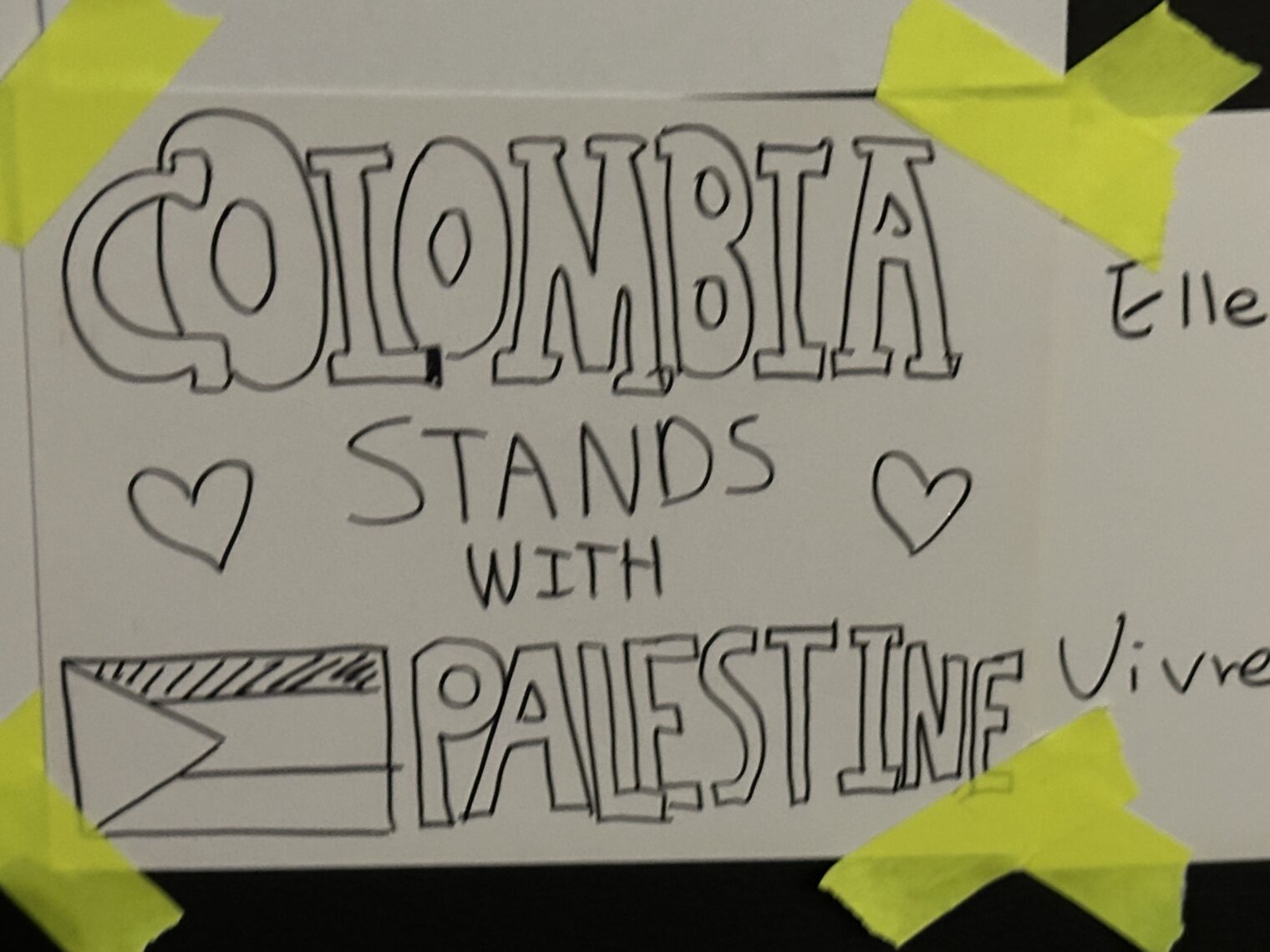
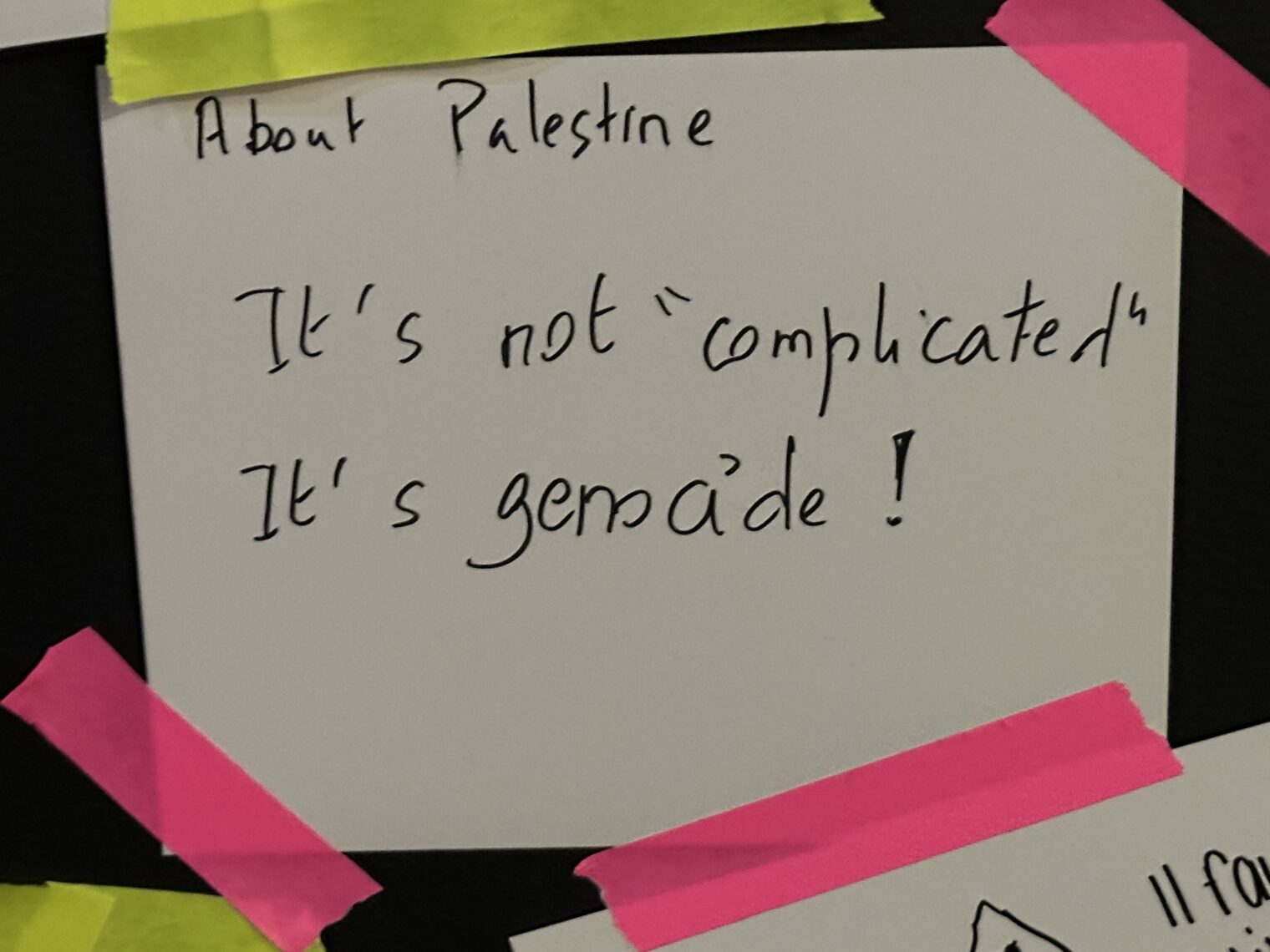
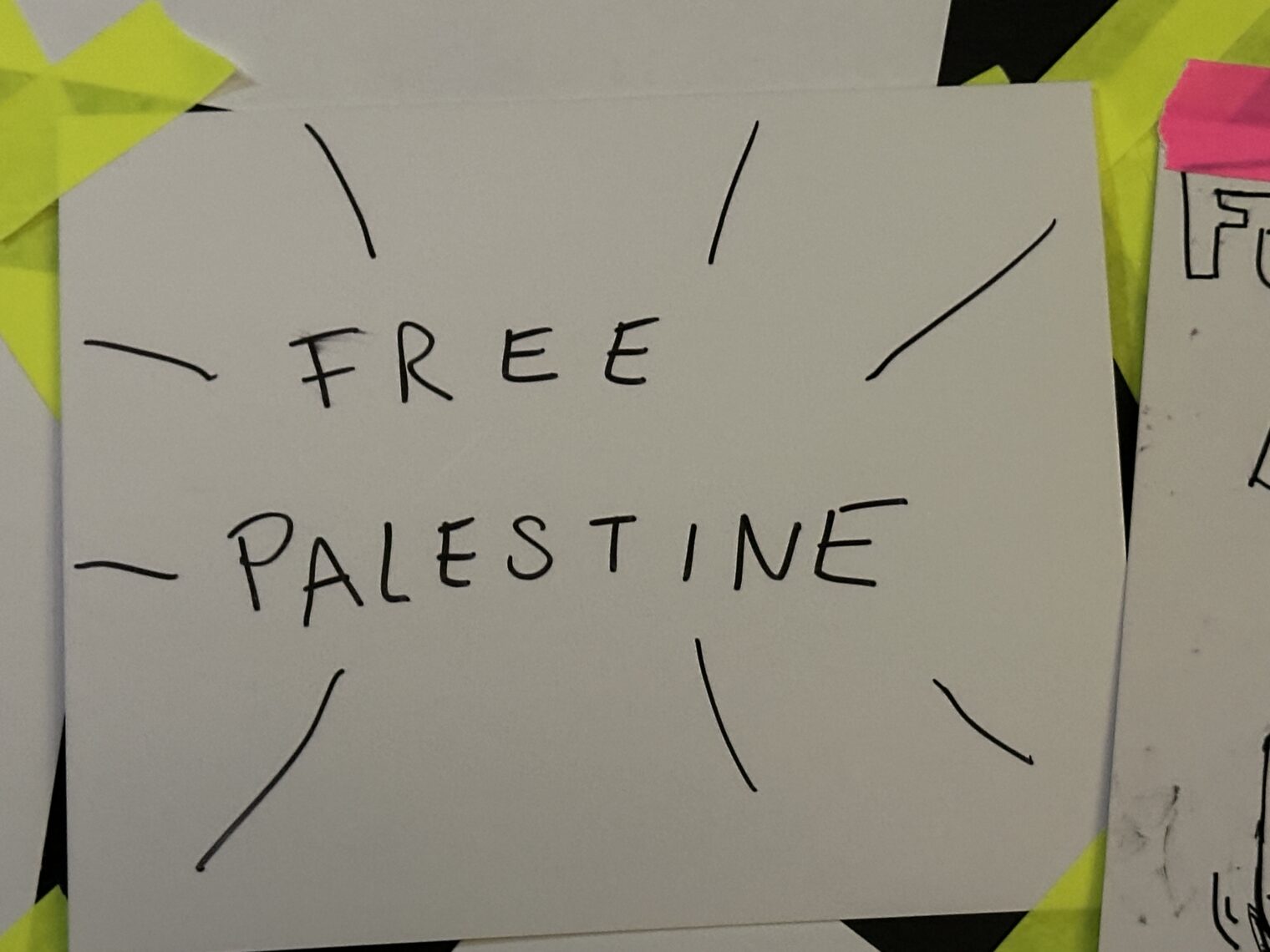
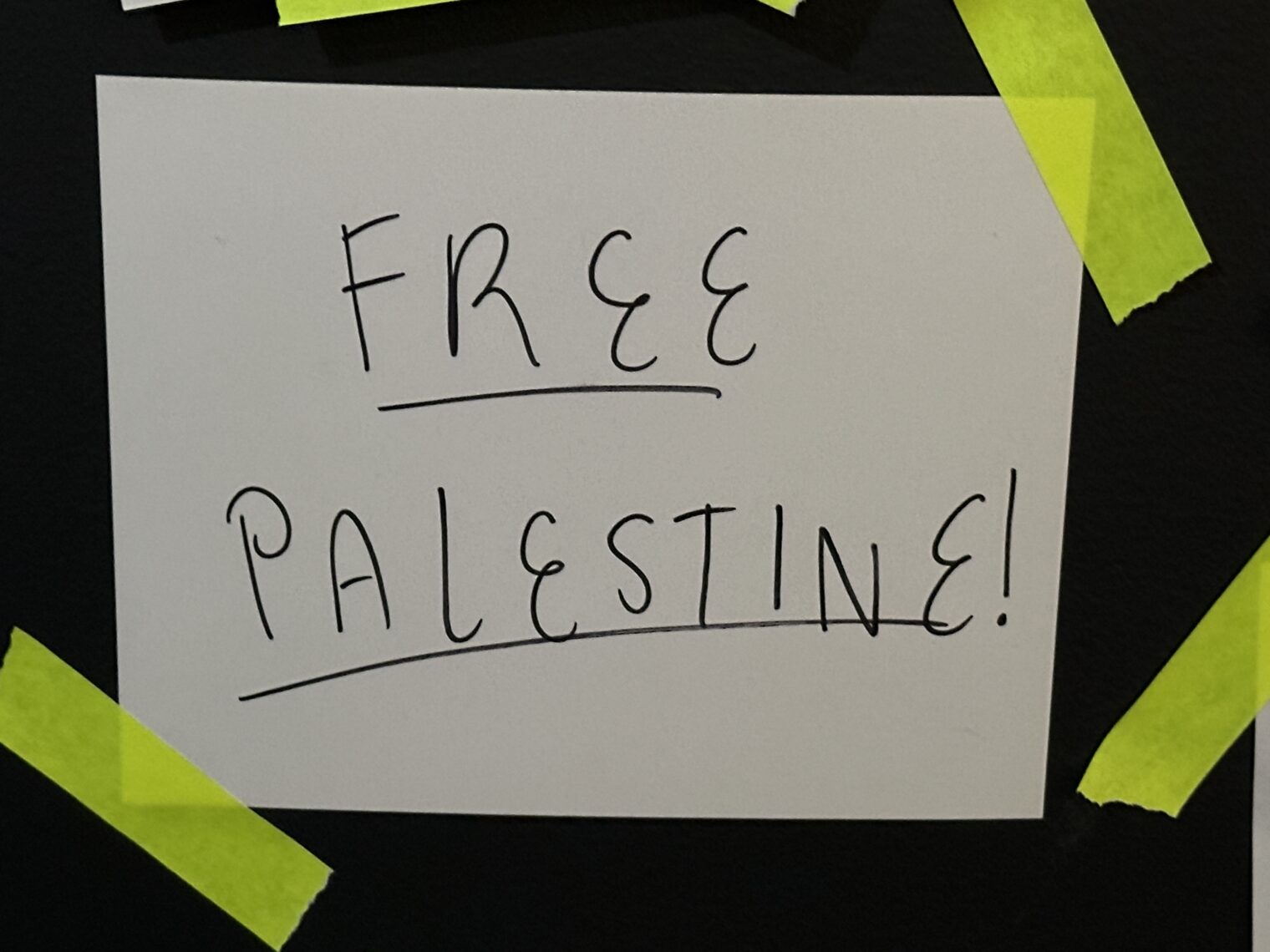
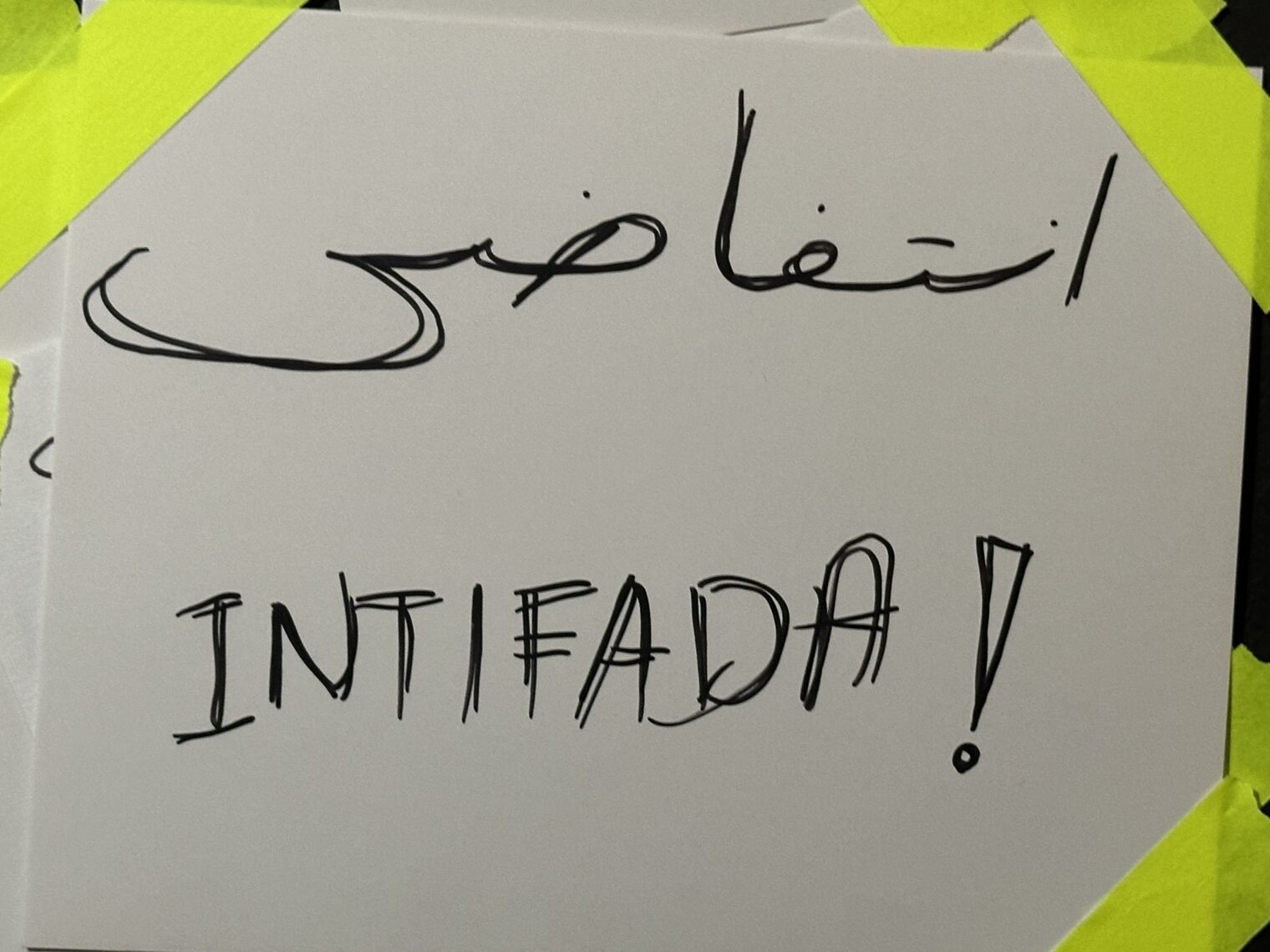
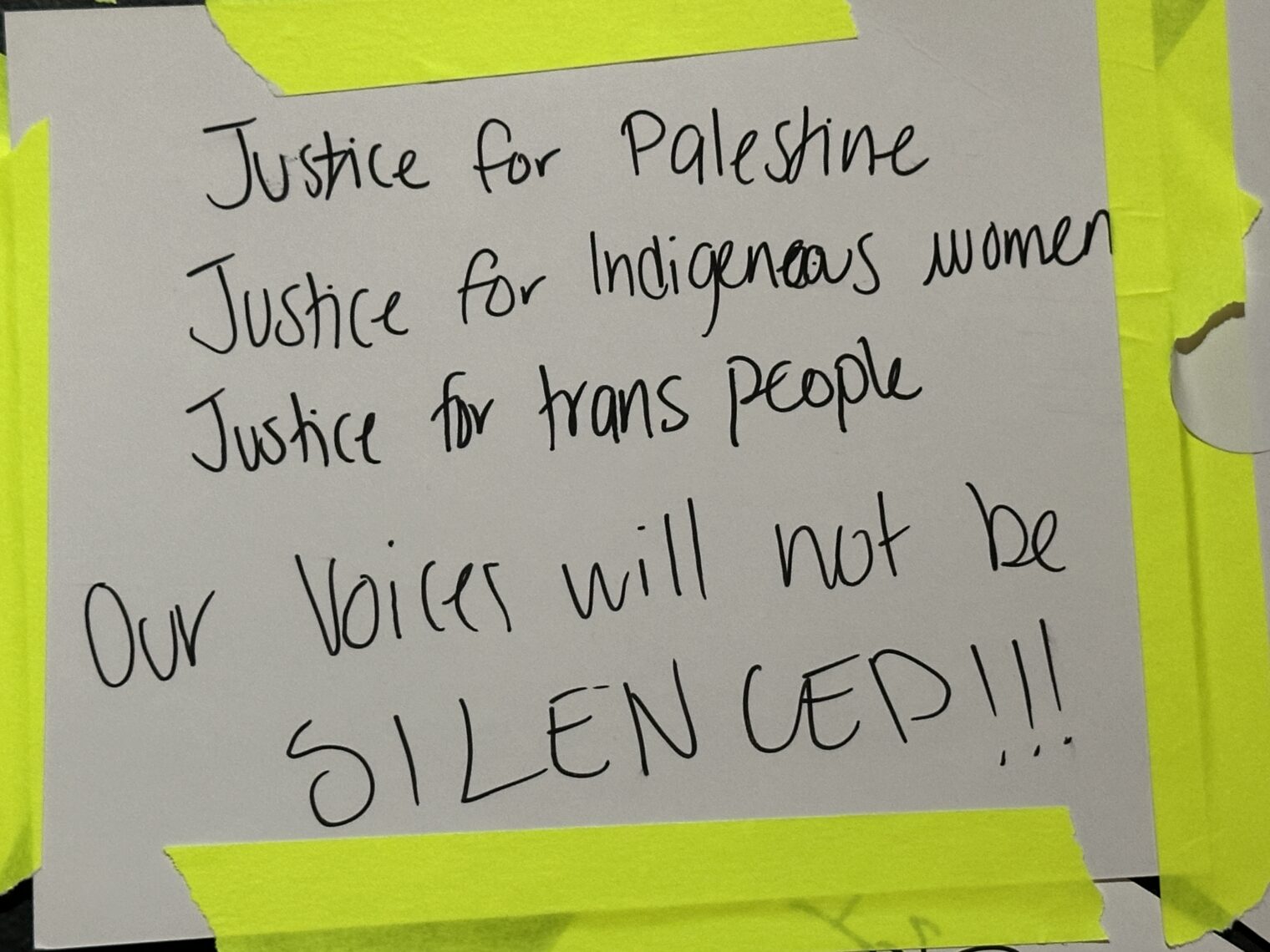
Although the Islamic Resistance Movement (“Hamas”), which is the elected and overwhelmingly popular government of the Palestinians, is not famous for celebrating Rainbow Flagism, there was the inevitable…
If Al-Shifa Hospital gets fixed up, the Montreal museum visitors are imagining gender affirming surgeries happening there:
Those who identify as feminists also want to see a corner of the world ruled by the guys who raped, maimed, and murdered women on October 7 (nearly all women who were born long after the events of 1948 that is the root of Arab grievance, so it is unclear how they can be blamed for the Nakba):
Ironically, after viewing an art show about criticism of Vladimir Putin, patrons were motivated to trumpet their alignment with Vladimir Putin’s position regarding Hamas (it is unclear that Putin supports “river to the sea liberation” (i.e., the elimination of Israel) but he is more supportive of Hamas than the typical national leader in Europe or North America).
Full post, including comments